

8 Books to Read before Visiting Bruges
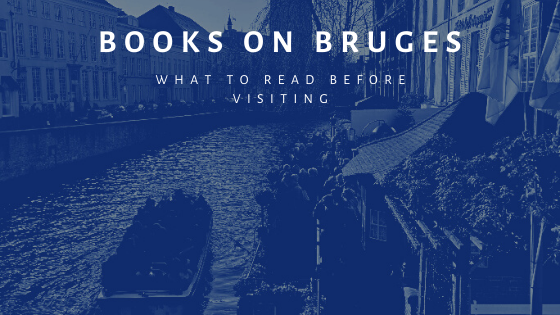
Bruges is probably best known for its abundance of luxurious chocolate shops and a wide selection of flavoured beers. With its cobbled streets, medieval buildings and a multitude of canals to explore it is not surprising that this gothic, Flemish city has grown in popularity in recent years. Whether you are choosing to visit for the now well-known Christmas markets or during the summer months where you can take a relaxing cruise down the numerous canals, this is a thriving city marking the map for Belgium.
For bookworms, there are numerous bookshops for you to trawl through and even a cafe offering books alongside your brunch . For those wanting to read about Bruges before visiting there are also several novels that either mention the city in passing or use the Flemish burg as a backdrop for the narrative whether in a factual or fictional way. These are novels that I am sure will be loved by armchair travellers as well as those researching for an upcoming trip.
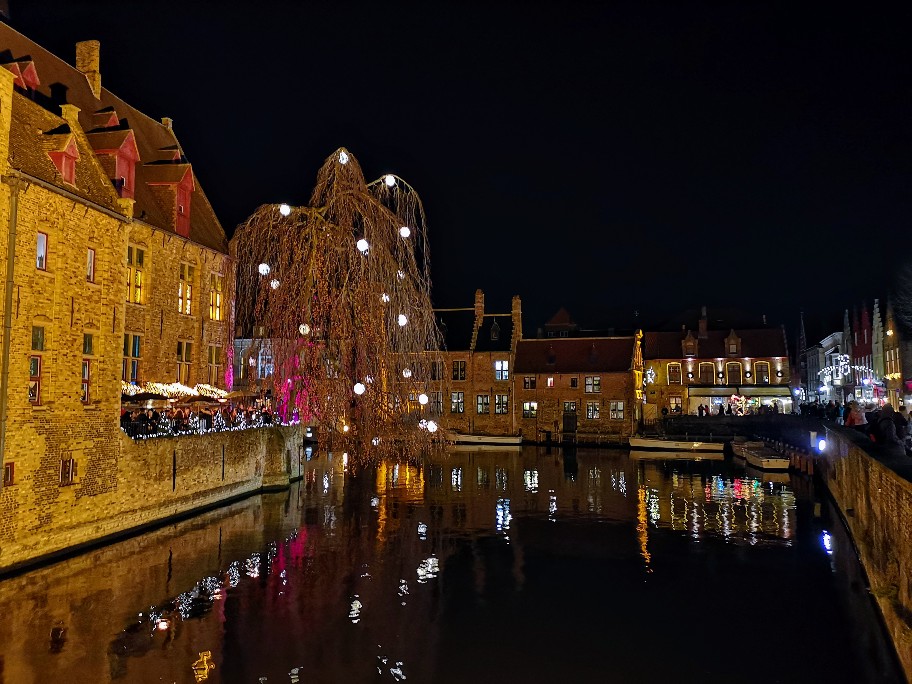
Table of Contents
Bruges: Books you should read
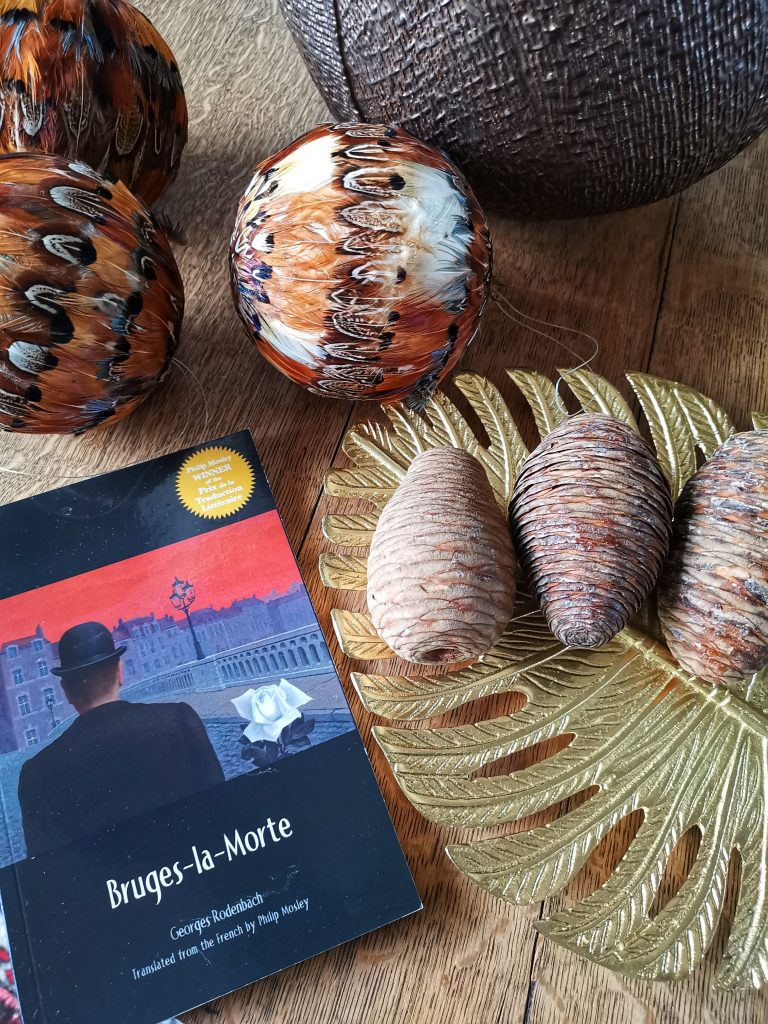
#1 Bruges-La-Morte (Georges Rodenbach)
Written in 1892, this is a symbolic novel of how the historic ‘dead city’ city was viewed at the time.
Hugues Viane is a widower who has turned to the melancholy, decaying city of Bruges as the ideal location in which to mourn his wife and as a backdrop for the narcissistic wanderings of his disturbed spirit. He becomes obsessed with a young dancer whom he believes is the double of his beloved wife, leading him to psychological torment and humiliation, culminating in a deranged murder.
Read my full review on Bruges-la-Morte to understand more about this story.

#2 The Square of Revenge (Pieter Aspe)
Featuring the bad-tempered, libidinous, alcoholic but skilled police investigator Deputy Commissioner Pieter Van In, this is one of four novels in a series that reveals the darker side of the beautiful Belgian city of Bruges.
The perpetrators who broke into an elite jewellery store in Bruges stole nothing but dissolved a fortune in priceless gems in jars of powerful acid—a perplexing crime that entangles Deputy Commissioner Pieter Van In and his beautiful colleague, assistant district attorney Hannelore Martens, in a wealthy family’s darkest, deadliest secrets.
#3 Niccolo Rising (Dorothy Dunnett)
The time is the 15th century when intrepid merchants became the new knighthood of Europe. Among them, none is bolder or more cunning than Nicholas Vander Poele of Bruges, the good-natured dyer’s apprentice who schemes and swash buckles his way to the helm of a mercantile empire.
Niccolò Rising finds us in Bruges, 1460. Jousting is the genteel pastime, and successful merchants are, of necessity, polyglot. Street smart, brilliant at figures, adept at the subtleties of diplomacy and the well-timed untruth, Dunnett’s hero rises from wastrel to prodigy in a breathless adventure that wins him the hand of the strongest woman in Bruges and the hatred of two powerful enemies.
From a riotous and potentially murderous carnival in Flanders to an avalanche in the Alps and a pitched battle on the outskirts of Naples, Niccolò Rising combines history, adventure, and high romance in the tradition stretching from Alexandre Dumas to Mary Renault.
#4 In Bruges (Martin McDonagh)
After a shooting in London goes hideously wrong, two hitmen, Ray and Ken, are sent to hide out in the strange, Gothic, medieval town of Bruges, Belgium, by their volatile and dangerous boss, Harry Waters.
While awaiting instructions from him as to what to do next, the pair attempt to deal both with their feelings over the botched killing and their differing attitudes towards this curious, otherworldly place they’ve been dumped in until the call from Harry finally comes through and all three men are enmeshed in a spiral of bloody violence that few will get out of alive.
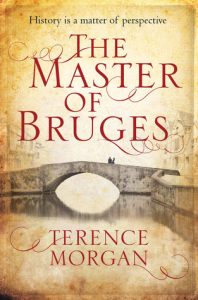
#5 The Master of Bruges (Terence Morgan)
Master painter Hans Memling is without peer in the artistic world of fifteenth-century Bruges. But when he falls in love with the Princess, Marie, daughter of his powerful patron, the Duke of Burgundy, his life begins to unravel.
Made reckless by his passion for Marie, Hans accepts an invitation to visit old allies in London. But there he will find himself plunged into the final stages of the War of the Roses and embroiled in one of the greatest political mysteries of all time.

#6 Hunting in Bruges (E.J.Stevens)
The only thing worse than being a Hunter in the fae-ridden city of Harborsmouth is hunting vamps in Bruges.
Being shipped off to Belgium sucks. The medieval city of Bruges is quaint, but the local Hunters’ Guild is understaffed, the canals are choked with dead bodies, and there’s no shortage of supernatural predators as likely suspects.
On second thought, maybe Bruges isn’t so bad after all.
With a desire to prove herself, protect the innocent, and advance within the ranks of the Hunters’ Guild, Jenna Lehane hits the cobbled streets of Bruges with blades at the ready. Someone, or something, is murdering tourists and dumping their bodies in the city’s scenic canals. With the help of a mysterious stranger, Jenna begins to piece together clues that are dotted throughout the city like blood spatter.
Determined to stop the killings, Jenna delves into a bloody local history that only raises more questions—but some secrets are best left buried. Jenna must put her combat training to the test as she struggles to unearth the truth about an ancient enemy.

#7 Christmas in Bruges (Meadow Taylor)
A satisfying short story for the busy holiday season…
Inspired by the beauty depicted in the movie “In Bruges,” Paula decides to spend Christmas by herself in the gorgeous Belgian canal city. One evening at a cozy bistro, she is very pleasantly surprised to meet her old college boyfriend and very first love, James. As they walk through the snowy streets, they laugh at their younger selves and ponder the unexpected course their lives have taken over the past nine years.
Paula, a promising actress, became a teacher, while James abandoned medical school to serve as a medic in Afghanistan. But as Christmas Day approaches, James’ painful war memories threaten their rekindled love.

#8 The Chocolate Lovers’ Christmas (Carole Matthews)
Christmas is just around the corner but the women of The Chocolate Lovers’ Club have more to worry about than present shopping . . .
Lucy loves running Chocolate Heaven but she hasn’t spent time with her boyfriend, Aiden, in weeks. And then her ex-fiancé turns up and things become even more complicated.
Nadia hasn’t let herself get close to a man in a long time, yet she can’t help feeling drawn to Jacob. Will he be her last chance for a happy ending?
Chantal and her husband, Ted, are besotted with their baby daughter Lana – but she’s not sure that’s enough to base a marriage on.
Autumn is dealing with a tragedy that has hit too close to home. But when she doesn’t get the support she needs from her fiancé, will she look elsewhere for comfort?
Can friendship overcome all in . . . The Chocolate Lovers’ Christmas?
Read my full review of The Chocolate Lovers’ Christmas to see how Bruges features in this story.
Bruges may be one of the smaller cities we have visited but that has not stopped a wealth of authors writing about it.
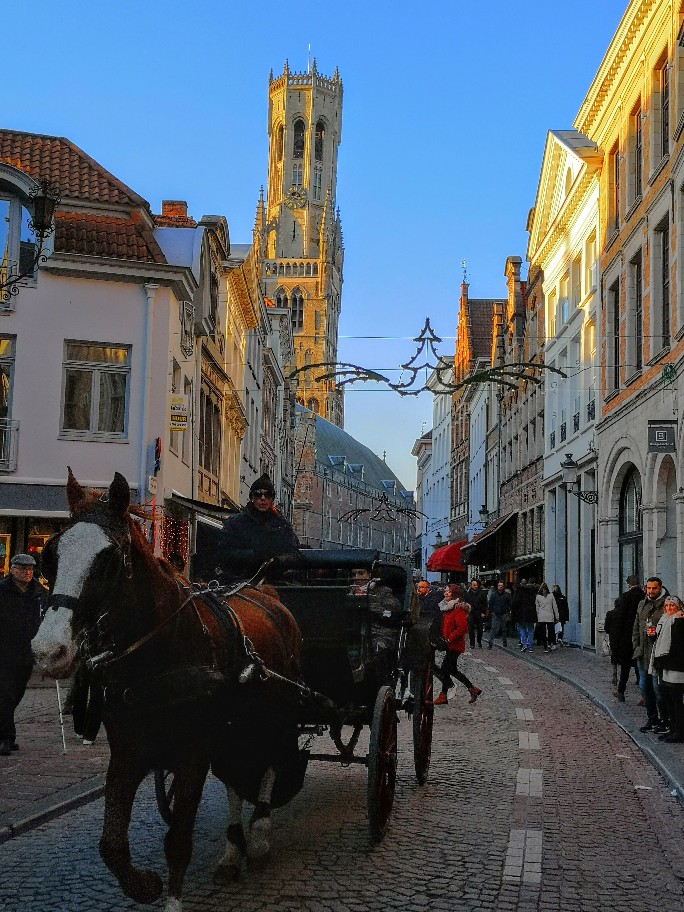
Not a mode of transport I agree with, but many tourists still use the traditional horse and carriage as a way to see the city.
Have you read any books that mention the Flemish city of Bruges? I would love to add to this list.
Did you enjoy this article? Then PIN it for later…

- Latest Posts
The main content creator at Travelling Book Junkie who loves all things book related. If lost, she can always be found in the nearest bookshop or library and is known for following in the footsteps of famous writers whether that be to a local cafe or to the top of a mountain. She loves to explore countries through the pages of a book before visiting anywhere to further understand their culture and traditions.
Epic Reads And Adventures: Pairing Books With Travel Destinations
- How important is a mattress for your health?
- 48 Hours in Florence, Italy – Must See Sights + Top Tips
You may also like

10 Books set in Siena, Italy

The Best Books for Giving Yourself an Ancient Egypt 101
Leave a reply cancel reply.
Your email address will not be published. Required fields are marked *
More Stories

How to Celebrate Valentine’s Day in Lockdown
Valentine’s Day this year is going to be a very different experience for many of us. I don’t know what you were all doing on cupid’s day of love last year, but I was sitting on the shores of Lake Garda sipping Laguna wine before enjoying a wonderful meal. Little…
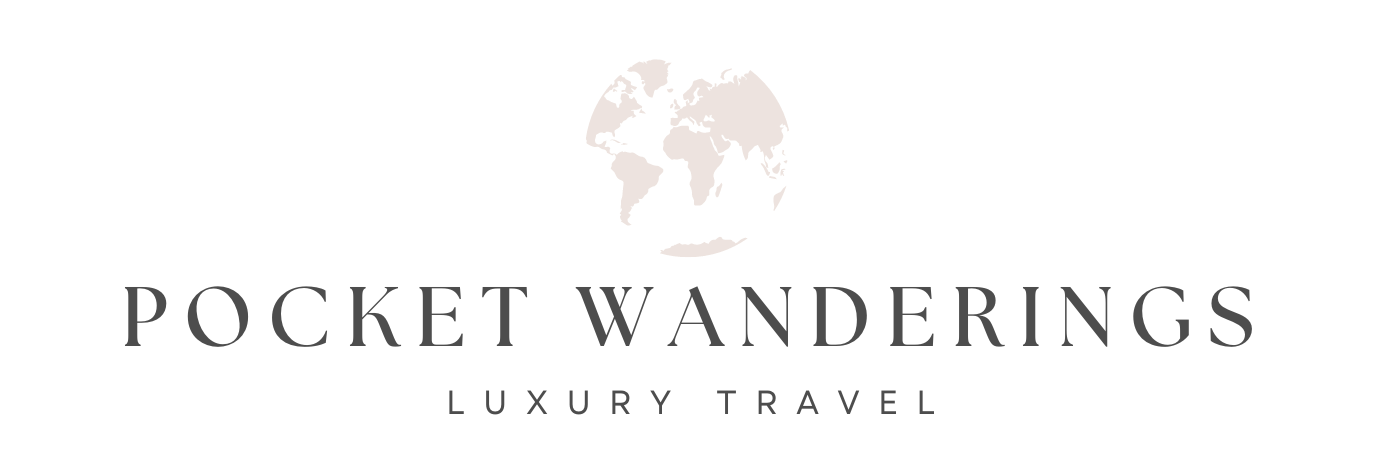
Let’s explore Bruges
Bruges travel guide
For me, visiting Bruges is like stepping into a real-life fairytale. I love the magic that oozes from every corner of the city and the atmosphere is utterly enchanting.
In my Bruges travel guide, I share my top recommendations for when to visit, how to get around and places to see. Plus my favourite spots for a good beer and a bite to eat!
About the author
Jessie Moore is a luxury travel expert with years of experience travelling the world to find the best destinations, hotels and adventures.
A pocket-sized European city with a big heart, the quaint city of Bruges is a real-life fairytale destination. As one of the most well-preserved medieval cities in Western Europe, visiting Bruges is a chance to travel back in time. In fact, the historic centre of Bruges is so historically significant that it has been appointed a UNESCO World Heritage Site.
Full of quaint charm and a fairytale aesthetic, Bruges is an intimate city that doesn’t try to do too much. Known affectionately as the Venice of the North, its 80 bridges frame the meandering canals which intertwine with the winding cobbled streets. Discover pockets of green throughout the city, from small hidden gardens to the larger grassy expanse which surrounds this Belgian city.
The beating heart of Bruges lies in the Markt Square, flanked by gorgeous Flemish architecture and overlooked by the towering Belfry. Architecture and aesthetics aside, the food and drink specialities of Bruges include fries, waffles, chocolate and beer – need I say more?
Whether you’re visiting for the architecture and ambience, the canals and culture, or the waffles and windmills, unearth the beguiling city in my Bruges travel guide.
Want to save up to 25% on hotels?
Subscribe to the Pocket Wanderings newsletter and get immediate access to my guide on how to save money on flights and hotels. Our weekly emails are filled with adventure inspiration, insider travel tips and exclusive discounts.
How to get to Bruges
If travelling from the UK, the easiest way to get to Bruges is by Eurostar from London to Brussels. Alternatively, travelling by plane is the most convenient option for those travelling from further afield.
By plane: The closest airport to Bruges is Brussels Airport, approximately 110km from Bruges. Direct flights are available from London, US, Canada, and more.
From the airport, you can get the train to Bruges, which takes around an hour and a half. Or a taxi should take around 75 minutes, although this is likely to be more expensive.
By train: If you’re travelling from London in the UK, getting the train is by far the easiest option. Catch the two hour Eurostar train from London St Pancras to Brussels Midi. Then it’s a direct train from Brussels to Bruges, which takes around one hour.
Brussels Midi station is well-connected to a number of other European countries, including France, Netherlands, Germany and Luxembourg.
By car: If you’re travelling from a nearby neighbouring European country then driving to Bruges is another option. If coming from the UK, you can take the Eurotunnel over to France and then drive into Belgium. Note that parking is limited in Bruges and you certainly don’t need a car to get around, as the city is small enough to get everywhere on foot.
HOTEL GUIDE
15 best luxury hotels in Bruges
Discover my pick of the best luxury hotels in Bruges, Belgium – whether you’re after canal views, a sumptuous spa, fine dining or a stylish bar.
20 Michelin-star restaurants in Bruges
For an unforgettable gastronomic experience, here is my handpicked selection of the best Michelin restaurants in Bruges.
How to get around Bruges
Bruges is a wonderfully compact city. I think that being so small is part of its charming, fairytale appeal. Plus, it also makes Bruges a great option for solo travellers, as there’s no need to navigate any complex public transport systems.
By foot: In my opinion, the only way to explore Bruges is by wandering its unspoiled streets on foot. You can reach even the furthest corners of the city relatively easily by walking. If you struggle with mobility then it’s worth noting that there are cobbles everywhere. It’s all part of the city’s quaint charm, but can make accessibility difficult.
By bus: The bus offers a convenient way of getting from the railway station to the centre of Bruges. They leave every 5-10 minutes and take passengers to the Market Square. There’s no need for a bus once you’re in the city centre, but it can be handy for station transfers.
By horse & carriage: Live out the ultimate fairytale fantasy and make a one-off trip by horse and carriage. The horses are well looked after so there’s no need to sacrifice any ethics for a romantic horse & carriage ride through the city. It’s not the cheapest way to see the city, but it’s definitely the most memorable.
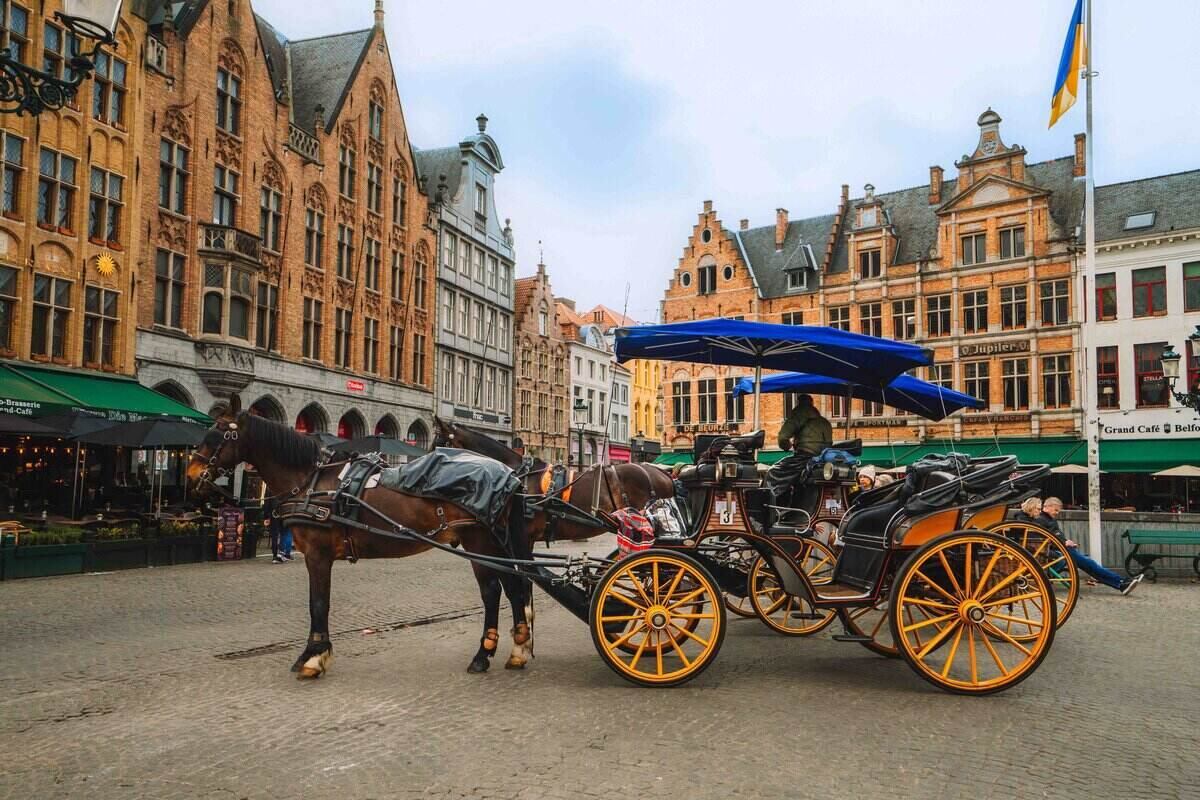
By bike: Cycling is a fantastic way to explore the outskirts of the city, where you’ll find quaint villages and rolling green countryside. You can get around the city centre by bike – and many of the locals do just that – although I think the main hub of Bruges is still best explored on foot so you can take in all the sights.
By taxi: The only time you’ll really need a taxi in Bruges is to get from the station to the centre. If you don’t fancy the bus, there are usually plenty of taxis available at the station. It’s a relatively short journey so prices are generally quite reasonable.
By car: You simply don’t need a car to explore Bruges. If you’re doing a road trip then it’s no problem to arrive by car. But once you’ve parked up, you’re not going to need it until the end of your Bruges excursion – unless you’re doing a day trip of course!
Best time to visit Bruges
Note that most attractions are closed on Mondays and that a lot of restaurants don’t open until the latter part of the week.
There are still plenty of options for dining out, but you’ll need to book in advance to guarantee a spot. This does mean it’s generally a little quieter from Monday to Wednesday.
Personally, I think it’s worth the more limited dining options for a more peaceful experience of the city.
One of the key shoulder seasons, I think spring is a wonderful time to visit Bruges. The city becomes adorned with colourful flowers in every nook and cranny.
European cities don’t get much prettier than Bruges in spring. If you’re visiting in spring, be sure to stop by Beguinage, as it will be covered in a blanket of white and yellow daffodils. Aim for late spring to benefit from fairer weather.
As you’d expect, summer is the most popular time to visit Bruges. The weather is at its best, although still mild and not scorching. Temperatures tend to hover around 19-20 degrees Celsius and rain is less likely – although still pack an umbrella!
The warmer weather does mean a lot of tourists. As Bruges is such a small city, the high volume of tourists is, unfortunately, very noticeable.
Another shoulder season, autumn is a great time to visit if you’d prefer to avoid the droves of tourists that the summer months attract. As the leaves turn golden brown, the city takes on a cosy charm.
Be sure to visit parks like Minnewater to get the full autumnal experience. If you’re visiting in late autumn, be aware that the weather will be chilly and rain quite likely. So pack accordingly!
The main reason that people visit Bruges in winter is due to the delightful Christmas markets. Wander the pretty wooden chalets, go for a skate on the ice rink, and indulge in traditional street food and drink.
As you can imagine, the weather will be cold. If you’re lucky, you may get to see Bruges covered in a glistening blanket of snow for the ultimate postcard-perfect visit.
DESTINATION GUIDE
20 amazing things to do in Bruges
From museums and markets to waffles and walks, here is my guide to the very best things to do in Bruges, the ultimate fairytale town in Belgium.
Brussels or Bruges: which to visit?
Trying to decide whether to visit Brussels or Bruges? I share the pros and cons of both beautiful Belgian cities to help you decide which to visit.
Browse and book the best activities and attractions in Bruges:
Frequently asked questions, how long to spend in bruges.
I’d say that three nights and two full days is a good amount of time to spend in Bruges. Given its small size, you may run out of things to do if you spend longer there. An alternative option is to add on another night and spend your third day in pretty Ghent, which is just a half hour train ride away.
Is Bruges overwhelmed with tourists?
Due to its small size, the city can feel overwhelmed with tourists during peak times. My recommendation? Do not miss out on an early morning stroll around the city, before the crowds descend. It’s the best time to see the unspoiled streets and remarkable beauty of Bruges in all its glory.
Is Bruges a good destination for solo travellers?
Bruges is an excellent destination for solo travellers. In fact, I often recommend it as a great starting point for anyone new to the world of solo travel. You don’t need to navigate any complex public transport systems, English is widely spoken, and it’s a very safe city with low crime rates.
Is Bruges expensive?
Bruges is a relatively expensive city, especially when it comes to food and drink . Just be sure to eat away from the tourist areas (definitely don’t eat on the Market Square) and the prices will be less inflated.
How many Michelin star restaurants in Bruges?
There are currently two Michelin star restaurants in Bruges: Zet’Joe by Geert Van Hecke and Sans Cravate. Bruges is also home to two Bib Gourmand restaurants and 15 other Michelin recommended eateries.
There are some exceptional restaurants in Bruges by exciting, innovative chefs. If you love a spot of fine dining, you’ll find plenty of options in Bruges. Just make sure that you book ahead of time.
Are there Christmas Markets in Bruges?
The main Christmas market takes place in the central Markt, where there is also a tempting ice rink. A second Christmas market takes place in the Simon Stevinplein square.
Wander the cosy wooden chalets, indulge in delicious home-made treats, and do a spot of Christmas shopping. It’s guaranteed to be an unbeatable festive atmosphere.
What are the food and drink specialities in Bruges?
Belgium is famous for waffles, chocolate, beer and fries – all the healthy treats in life! It follows that all of Belgium’s specialities can be found and sampled in Bruges.
Bruges highlights
Historic centre.
The historic centre of Bruges is one of the city’s main appeals. In fact, it was designated a UNESCO World Heritage Site in 2000, owing to its layout being the same as it was in the Middle Ages.
The mediaeval centre is a hub of gothic architecture and quaint streets, all with a lively city feel.
Be sure to wander the historic centre on foot, along hidden streets and romantic bridges. The canals wend their way around the cobbled streets which are lined with recognisable Flanders architecture.
Go shopping, indulge in a traditional Belgian waffle, or pause for a moment in one of the many cafes or bistros.
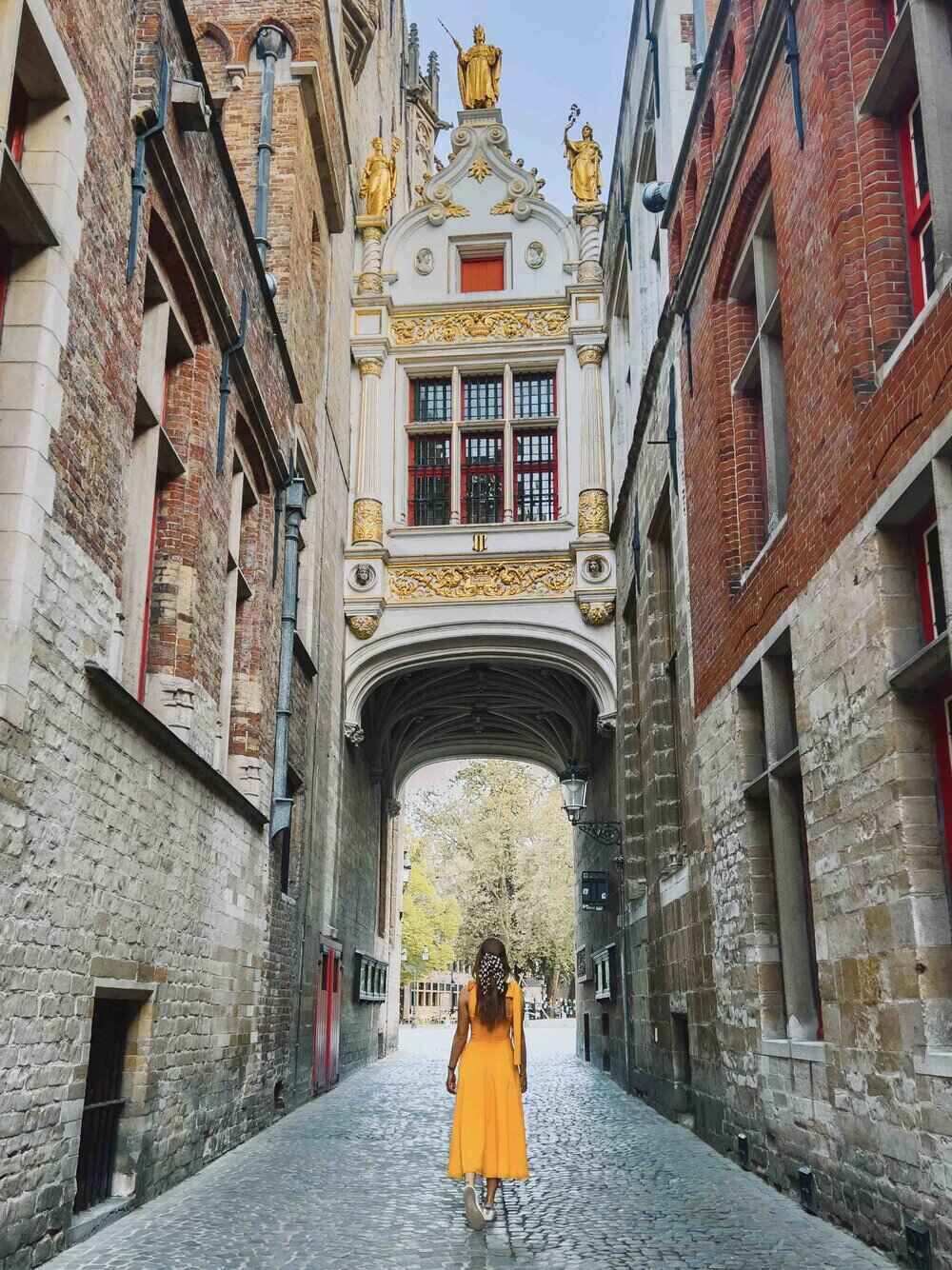
Explore by canal
A visit to Bruges would not be complete with a journey along the canals. Gain a different perspective on the historic centre by seeing it from the calming waters.
There are plenty of canal boat tours available throughout Bruges, with insightful commentary that brings the city to life.
Try to go relatively early, when they open at around 10am to avoid long queues. I recommend picking one up from the jetty at Rozenhoedkaai, as you can enjoy an alfresco drink in the area afterwards.
Seeking out the hidden pockets of Bruges via the waterways is an absolute must.

Bruges breweries
It’s no secret that Belgium is famous for its beer. What better excuse to get seven pints deep, all in the name of ‘soaking up the culture’!
Bruges has three working breweries: De Halve Maan, Bourgogne des Flandres, and Fort Lapin. For a popular guided tour, head to De Halve Maan to learn more about the process of creating their award-winning beers.
A tour would not be complete without a tasting, so make sure you leave time – and room – for this. If you still haven’t had your fill of beer, you’ll find beer infused dishes in many of the restaurants.
Sound like a dream come true? Book a table at Cambrinus, which offers entire menus prepared with beer (and the longest beer menu you’ll ever see).
Don’t have time to finish reading? Save on Pinterest for later:
Pocket Wanderings is a luxury travel and lifestyle brand run by London-based content creator, Jessie Moore. Here you’ll find a community of fellow wanderlusters and adventurers.
Quick Links
About Contact Privacy Policy
Want up to 25% off hotels?
Subscribe to my newsletter and get immediate access to my guide on how to save money on flights and hotels. Our weekly emails are filled with adventure inspiration, insider travel tips and exclusive discounts.

Bruges Travel Guide: Everything You Need to Know to Plan Your Trip
Planning your travels to Bruges? Don’t miss this handy Bruges travel guide – what to see, the best time to visit, where to stay and other travel tips for the perfect trip.
Bruges (Brugge in Flemish) is, quite frankly, one of the most beautiful cities in Europe.
A maze of gorgeous canals twinkling in the sun, quirky buildings with stepped roofs and elaborate patterns – it’s no wonder that it’s an eternally popular city break destination.
The old capital of Flanders, the interesting buildings and picturesque canals make it easy to picture what Bruges would have looked like in medieval times – and also form the basis of its nickname “ The Venice of the North ”.
I’ve visited Bruges a number of times and yet, I never tire of its views. But don’t just think of this as a pretty place, a bland backdrop for Insta poses and not much else. Once the epicentre of Belgium’s cloth industry and a commercial hub, you can spy relics of the city’s former importance around every corner.
Add to that a quiet charm and more than its fair share of quirky spots and you have a destination that should go straight to the top of your European travel bucket list .
It’s time to discover Bruges.
Click here to open my guide to Bruges attractions – complete with an accompanying Google Map for you to save to your phone.
Where Is Bruges? Why Should I Visit?
Bruges is a mid-size city in northwest Belgium. It’s the capital of the West Flanders region, and has a population of around 110,000.
This means it’s a relatively small city but with a big reputation.
Another reason for Bruges’ popularity is that it is super easy to get to from a number of other cities/ ports both within Belgium at from further afar. Some of the cities within two hours’ travel from Bruges include Amsterdam (Netherlands), Brussels (Belgium) and Dunkirk (France).
How to Plan Your Travel to Bruges: Before You Go
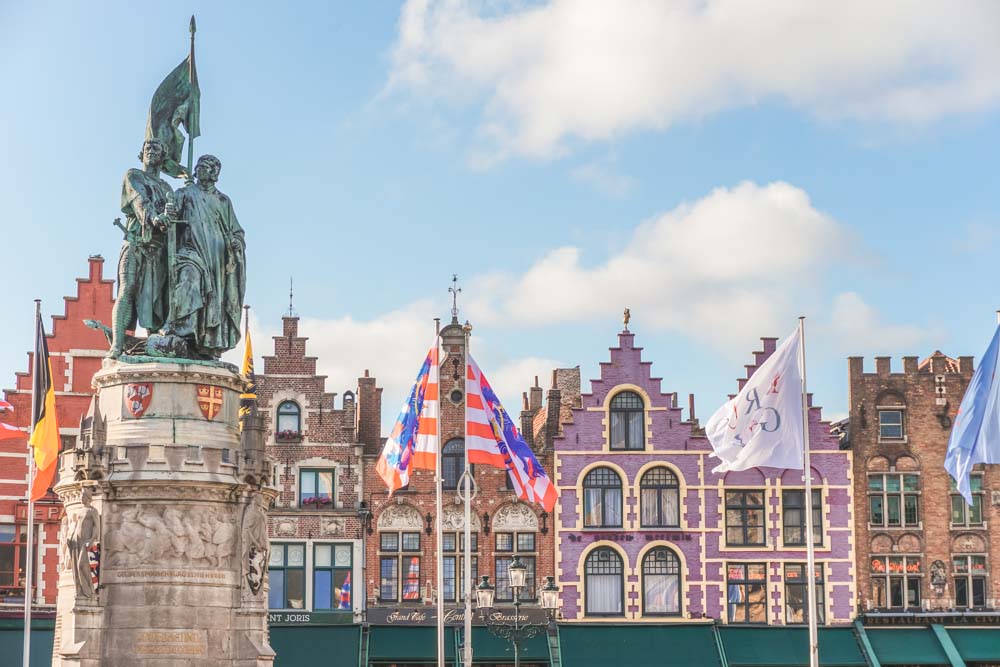
Best Time to Visit Bruges
Overall, Bruges has a pretty mild climate – meaning things can get chilly but not totally freezing, even in the winter. The reverse is also true – summer is definitely on the warm side, but not scorching.
Whenever you can go! Okay, moving away from the travel blog cliches to give you a proper answer.
This means you do have a fair bit of choice as to the best time to visit Bruges. Personally, I like travelling in the spring – around April/May.
At this time, things are warming up and the flowers are out in force. However, the mad crowds that arrive in June/July/August loom further away on the horizon, giving you a little more room to breathe.
The only time I would potentially avoid Bruges is January. You can certainly visit at this time, and it’s a quiet time to go – but some attractions are closed.
So, if you have anything you absolutely must see, make sure you check it’s open before you book your January journey.
Read Next: When is the Best Time to Visit Bruges? A Step by Step Guide
Handy Resources for Getting To Bruges
Since Bruges is so close to various transport hubs, getting there is pretty much a piece of cake.
If you’re wondering “how do I get to Bruges”, you’ll be happy to hear that there are plenty of great options.
The nearest airport is Oostende-Brugge International Airport (OST). It’s a half-hour drive to the centre of Bruges or you can get a bus/train combination that takes around 45 minutes (excluding connections).
By Train
Bruges’ Centrum station is about a 20 minute walk to the centre of town. It’s connected to the UK via the Eurostar (you need to change in Brussels to a normal train – the cost is included in your ticket) and to many other European destinations by train.
Here are some handy resources to help you on your way to gorgeous Bruges:
- Skyscanner – the best website for finding cheap flights to Bruges. It instantly compares various booking sites and airlines, and will even let you search the whole month so you can snap up a bargain.
- Eurostar – worried about your carbon footprint or just not keen on flying? I love catching the Eurostar. It’s convenient from central London, fast and you get to admire some scenery on the way.
- Rail Europe – if you’re coming from elsewhere in Europe, then you’ll probably want to book your ticket via Rail Europe. There’s lots of connections from France, the Netherlands and more.
Where to Stay in Bruges
Bruges is a fairly compact city, meaning even if you stay on the outskirts you won’t be hiking for miles to find the main attractions.
That said, I personally recommend staying around the Markt/Burg area when you travel to Bruges. This is the most happening part of the city, and you’ll have tons of cool stuff right on your doorstep.
This means less time walking between destinations and more time spent actually seeing the sights of Bruges.
I understand that staying in the centre can be pricey (and bustling), so if you are looking for a more affordable or quieter option, there are other choices. The area around Minnewater Park is peaceful and relaxing, while Sint Anna is a good choice if you’re looking for value for money.
High End – Hotel De Orangerie
De Orangerie is the perfect option if you’re looking for a high-end stay in the centre and boasts luxury rooms in a converted 15th century monastery.
Check rates and reviews for Hotel De Orangerie
Mid-Range – Novotel Centrum
The Novotel isn’t going to set anyone’s world alight but it is contemporary and comfortable, and very well-priced for its location.
Check rates and reviews for Novotel Centrum
Read more: Where to Stay in Bruges: The Best Neighbourhoods and Hotels in the City
Packing for Your Bruges Trip
Bruges’ mild climate and tendency for rain (ah, just like London) means you’ll probably want to pack a few layers and a brolly any time of year. However, exactly what to pack does depend a fair bit on the season and forecast.
Read more: My Comprehensive Europe Packing Guide.
Bruges City Guide: What to Do During Your Bruges Trip
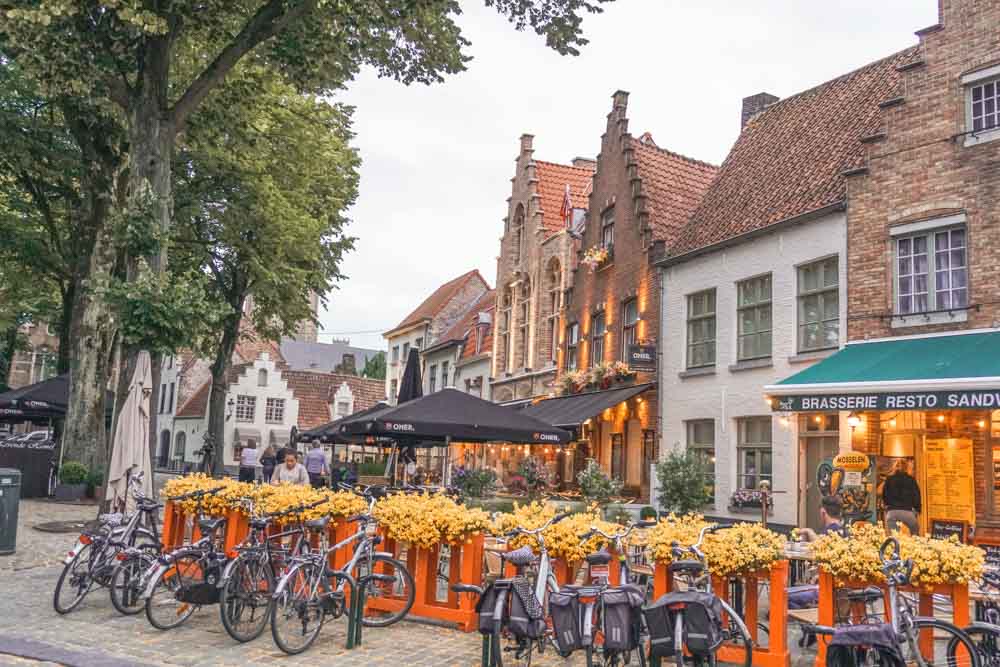
Top 5 Things to do in Bruges
Short on time and keen to see the absolute most unmissable spots in Bruges? I’ve got you.
It simply would not be a Brugge travel guide unless I recommended a visit to the Belfort Tower. It’s Bruges most iconic attraction, and a definite must see.
The tower is 86 metres high and was built back in 1240, and then expanded significantly in the 15th century.
Today, it is most famous for the amazing view you can get from the top. You’ll have to climb over 300 steps to make it, but trust me – the sore legs are totally worth it for the gorgeous views.
Markt & Burg Squares
Bruges boasts not one but two gorgeous squares. The first is Markt Square, where you’ll also find the Belfort.
It’s one of the prettiest market squares in Europe – and anyone who’s been to Europe knows that the continent isn’t short on market squares. It’s particularly charming with its Flemish buildings and market stalls.
Within an easy walk is Markt’s little sister, Burg. Archaeological evidence shows that people have lived here for close to 2000 years – although most of the buildings you can see are from the 14th century onwards.
Minnewater Park/Lake of Love
Most Brugge travel blogs describe the city as ‘romantic’ and that’s pretty accurate. But things get sickly sweet over at Minnewater Park.
Local legend says the park is named after Minna, a local girl who’s father tried to marry her off to a man who wasn’t her true love. To escape the wedding, Minna ran away towards the parkland, eventually falling, exhausted, into the arms of her love – and promptly dying.
Romantic? Depressing? You decide. Either way, the park is very beautiful and a must-see in Bruges.
Within the park you’ll find a pretty lake crossed by a bridge. Rumour has it you’ll find everlasting love with whoever you cross it with, so cross carefully.
Canal Cruise
Bruges is one of a couple of cities known as ‘The Venice of the North’ and it’s arguably the most beautiful.
It makes sense, then, that canal cruising would be an unmissable activity on any Bruges vacation.
Taking a canal cruise will let you see some of the most beautiful views in Bruges from the water. Plus, it’s relaxing and peaceful – so what’s not to love?
Try A Few Local Delicacies
Bruges may not be an obvious choice for one of the great foodie cities of the world, but there are great places if you know where to look.
The city boasts plenty of fabulous local delicacies that you should definitely try while in Bruges, Belgium.
First and arguably most importantly – Belgian beer. If you are even a little bit keen on a good pint, you’ve simply got to try it.
Equally tempting is delicious Belgian chocolate which is a true revelation, particularly when paired with a scrummy waffle or two. If you’re going the savoury route then mussels or Flemish stew are musts.
Read More: Things to Do Bruges, the Venice of the North
Or check out these brilliant guided tours and activities.
Suggested Bruges Trip Itineraries
Looking for some ideas for how to spend your time during your travels to Bruges? Look no further.
If you’ve got just one day in the city, then pop on your walking shoes and get ready to explore.
I recommend concentrating on the central area, around Markt and Burg squares. You’ll be able to check out Bruges icons like the Belfort and the Basilica of the Holy Blood, as well as soak up the atmosphere of the squares themselves.
Make sure to try some chocolate and beer as you wander.
Read More: A Day Trip to Bruges: What to do in Bruges in One Day
Two Days
Two days – perhaps a weekend – in Bruges will give you a little more time to explore the city. With two days, you’ll be able to see the central highlights above, as well as head out further.
A little further away from the city you’ll be able to enjoy more unusual sights including the Beguinage, Minnewater Park, Sint Janshospitaal and the City Ramparts. This will give you a pretty good perspective on what Bruges has to offer.
And don’t forget the all important beer, chocolate and mussels.
Read More: Weekend In Bruges – The Perfect Itinerary
Hidden Bruges – Unusual Things to Do
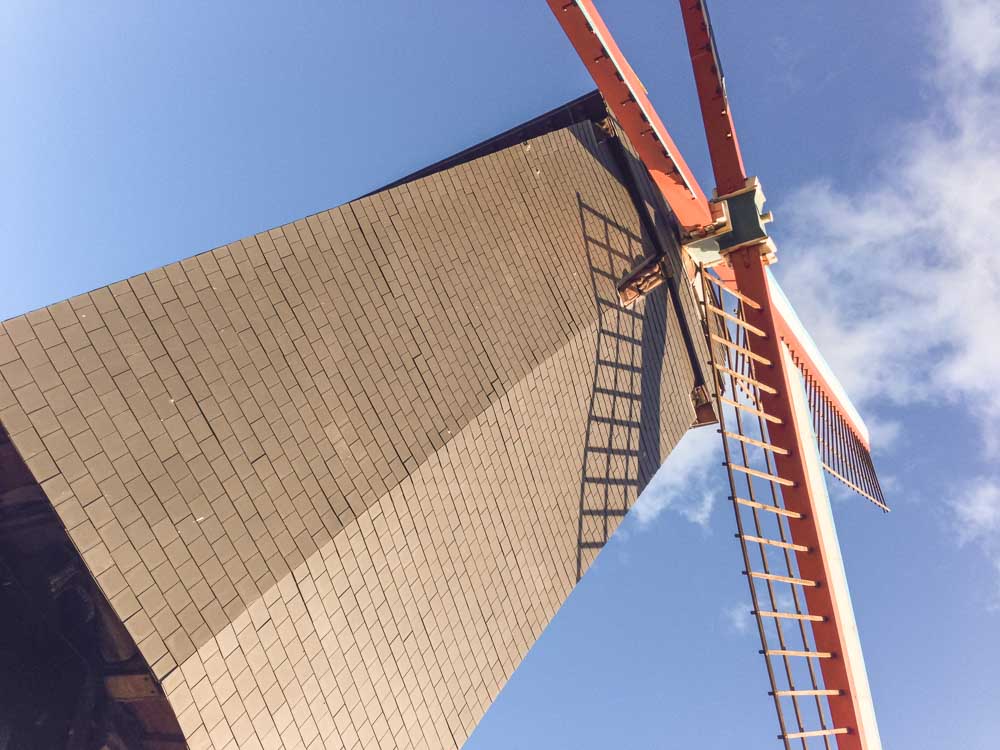
The crowds can get a tad overwhelming in Bruges, so shake them off by heading out to these hidden gems.
Sint Janshospitaal
Who doesn’t want to spend their holiday checking out a medieval hospital in Bruges?
Lots of people, apparently, which is why this is one of my favourite hidden gems. It’s such a quirky look at history, and a fabulous attraction in Bruges.
Frietmuseum
Whoever dreamed up a museum devoted entirely to French fries was a genius, in my opinion.
If you’re looking for something different to what’s usually featured in Bruges, Belgium travel guides, then I highly recommend paying a visit to the Frietmuseum . Just maybe not when you’re hungry (or when you are – you get free fries at the end of your visit).
City Ramparts
If the concrete and crowds of Bruges ever get too much, just head to the city ramparts on the outskirts of town (otherwise known as Windmill Walk).
Here you’ll find plenty of locals jogging and walking, but far fewer tourists. Those who skip over this are doing themselves a disservice if you ask me, as you get a gorgeous view of four old windmills as you walk.
How to See the Best of Bruges for Free
Trying to save your euros? With my Bruges travel tips, you’ll be able to see the best of the city – without spending a single cent.
- DIY walking tour – Bruges is a compact, flat city that is easily walkable. Take a look at my Bruges tourist map and hit the road – you’ll easily be able to explore the highlights of Bruges without spending a penny.
- While some of Bruges’ attractions have entry fees, plenty don’t. In particular, if you focus on visiting the parks, squares and churches, then you’ll find that Bruges can be very easy on the wallet.
- Once a year on Flanders Heritage Day, many of the attractions in Bruges waive their entry fee. It’s a budget dream come true – although the crowds can be enormous.
Where to Eat in Bruges
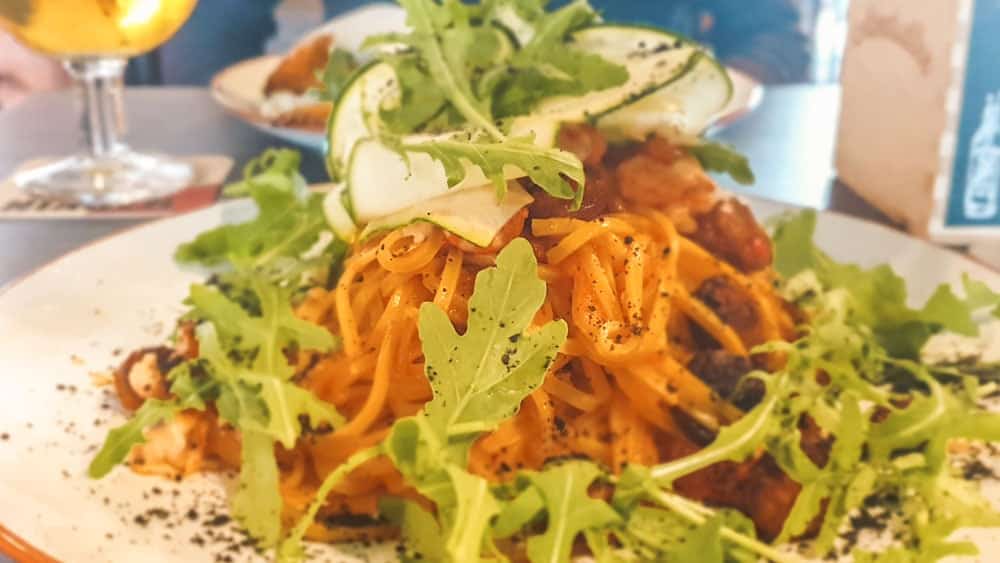
For a pretty small city, Bruges seriously punches above its weight in the food stakes. Here are some of the best restaurants in the city.
- Park Restaurant – if you’re looking for a place to splurge (you are on holiday after all) then you’d better snap up a sought-after table at Park Restaurant. This innovative restaurant serves up classic European fare with a twist, and is mouth-wateringly good.
- Fred’s Waffles – chocolate, ice cream and waffles – ah, the holy trinity. It doesn’t get much better than enjoying a delightfully decadent dessert from the humble shop of Fred’s Waffles. Prepare to be dazzled by the choice (and the deliciousness).
- ‘T Bagientje – it may be difficult to believe, but one of Bruges’ best (and most affordable) restaurants is hidden away near the train station. Locals and visitors alike love this place, so if you’re looking for some classic Belgian dishes – you better head on over.
Read More: Where to Eat in Bruges – 7 Must-Try Restaurants and Cafes
Where to Drink in Bruges
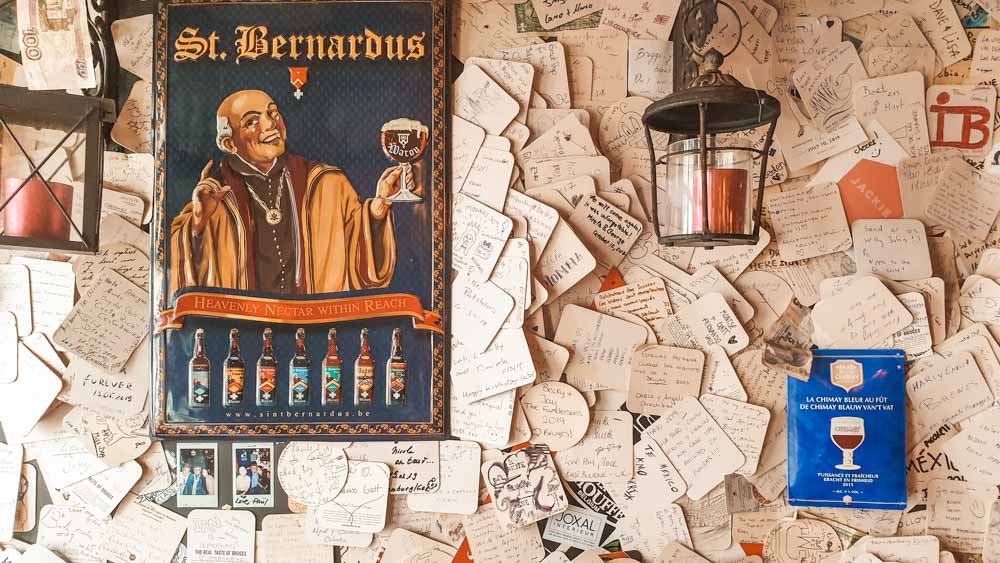
Beer is kind of a big deal in Bruges – but even if you’re not a fan, you’ll find alternatives on the menu at Bruges’ best watering holes.
From chic cocktail bars to grungy pubs (always a winner in my book), there’s plenty to choose from. Here are my favourites.
- The Beer Wall at 2Be – the secret is kind of in the name. A great place to drink beer is a must on any Bruges city guide, and this one will give you a dazzling amount of choice. If you’re overwhelmed, ask the staff for some recommendations for local varieties.
- Bourgogne des Flandres – get right to the source of Belgium’s amazing beer and enjoy it straight from the brewery. This one recently returned to the city after a 60 year absence, and boy am I glad we got it back.
- De Garre – what could be better than Belgian beer, you ask? Well, how about Belgian beer served up with some delicious cheese to the side. That’s what you’ll get from the cosy bar, De Garre.
Read Next: The Bruges Beer Guide: Where to Find the Best Beer in the City.
Day Trips from Bruges
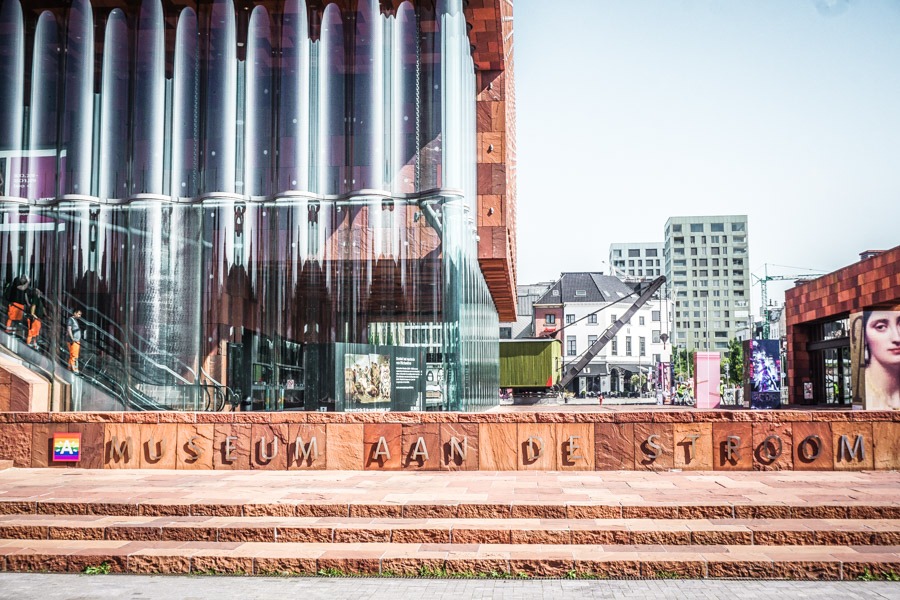
Good transport links and proximity to other cities makes Bruges a great base for day trips. Here are some of the best to add to your Bruges tourist guide:
- Antwerp – to experience a different Belgian city, I say make the hour and a half journey to Antwerp. This stylish city has a very different feel than Bruges, not least because it’s five times the size. If you love culture or fashion, this is a great option.
- Domburg – if the sun is shining (or you aren’t deterred easily) then a trip to the seaside is one of my top day trips from Bruges. The picturesque town of Domburg is particularly popular with local holidaymakers, and has some great sandy beaches.
- Lille – funnily enough, the closest day trip on this list is actually in France, not Belgium – but don’t let that deter you. It takes just an hour to get to the picturesque little town of Lille. Although it is distinctly French in character, you may also notice that it has plenty of Flemish influence too.
In need of Bruges day trip inspiration?
Bruges Travel Guide: Basic Tips and Tricks for Making the Most of Your Stay
Top bruges travel tips .
- A common piece of Bruges travel advice is to book in advance if you’re visiting in summer – and oh boy, is it true. The city really struggles to deal with the number of tourists it receives, so make sure you snap up some good accommodation early.
- If there are any “must sees” on your itinerary, check their opening hours. In particular, many restaurants close Sunday to Tuesday, while some attractions shut down during the month of January.
- Although mild, Bruges’ weather can be unpredictable. Don’t just rely on general trends, but check the weather forecast before you go.
Tipping In Bruges
- Tipping is not customary in Bruges or anywhere in Belgium. The bill that you receive will include VAT (tax) as well as a service charge, and it’s fine not to pay anything else. That said, a small tip – around 5% or a couple of euros – is appreciated, especially if you feel the service was exceptional.
Facts About Bruges
- You probably know that Bruges was the setting for the Colin Farrell film In Bruges . His overall grumpiness about Bruges doesn’t seem to have deterred the crowds, however.
- This year, Bruges has decided not to hold their usual ice sculpture festival or build the usual ice rink, due to climate change.
- Bruges is a city that really values education – it’s home to several world class educational institutions, and you can’t leave school until you are eighteen years old.
Handy Phrases for Travelling to Bruges
The local language in Bruges is West Flemish, a unique language which is basically the same as Dutch. Luckily, English is widely spoken in Bruges – but you can win some brownie points with the following phrases.
- Hey, oe est? (Hi, how are you?)
- Klappe ghy Ingels? (Do you speak English?)
- Merci (Thank you)
- Santé (Cheers – when drinking beer)
Read More Bruges Travel Guides
Bruges travel guides and tips.
Read the full collection of Bruges travel guides and articles from The Discoveries Of.
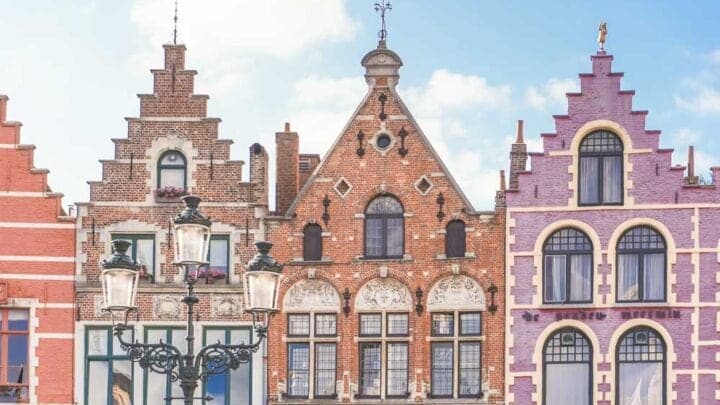
The Best Things to do in Bruges, Belgium: Exploring the Venice of the North
What to see and do during your trip to Bruges.
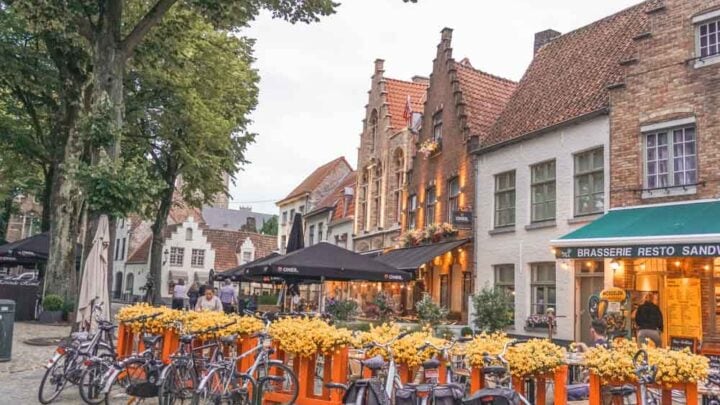
Where to Stay in Bruges: The Best Areas + Hotels For Your Trip
The best places to stay in Bruges - a neighbourhood and hotel guide.
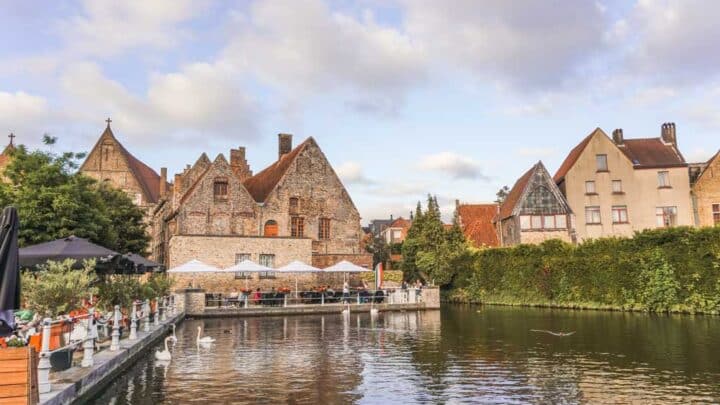
A Weekend in Bruges: How to Plan The Perfect Bruges City Break
How to plan the perfect two day escape to Bruges.
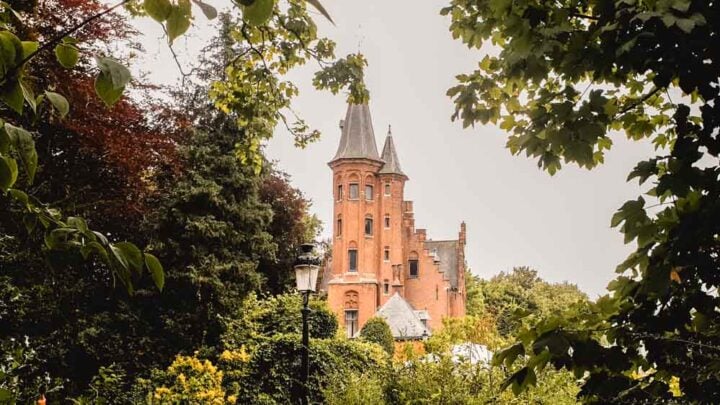
A Day Trip to Bruges: How to Plan + See the Best of Bruges in a Day
Seeing the best of Bruges in a day and tips for a one day trip.
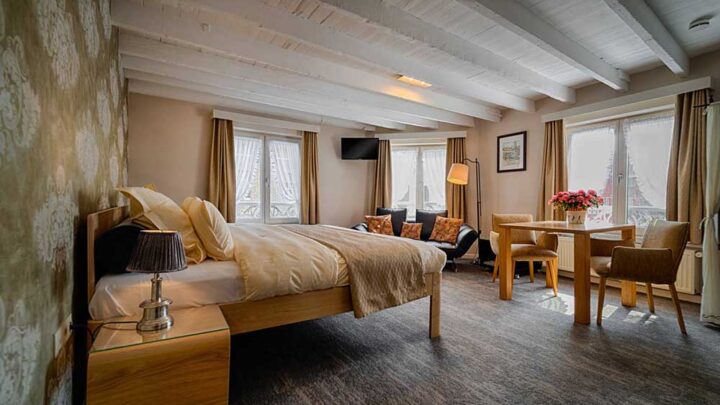
Best Airbnbs in Bruges: Cool, Quirky & Stylish Spots For Your Stay
Cool Airbnbs in Bruges that are perfect for your stay.
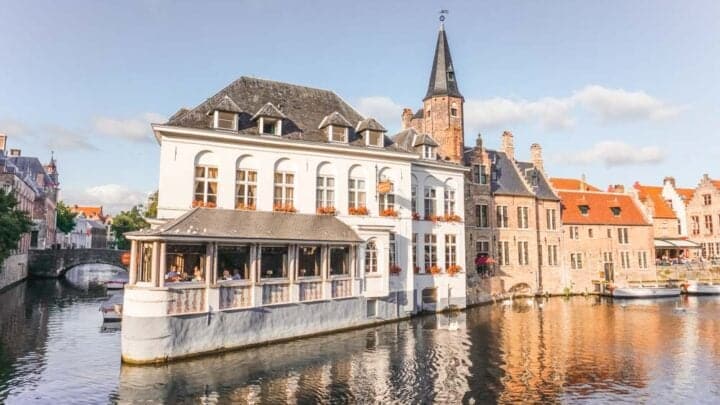
Bruges Map: A Handy Tourist Map of Brugge’s Must-See Attractions
A map of Bruges' top tourist attractions - ready for you to download to your phone.

The Best Places to Eat in Bruges: Restaurants + Cafes You Shouldn’t Miss
The restaurants and cafes serving up the best food in Bruges - for all budgets.
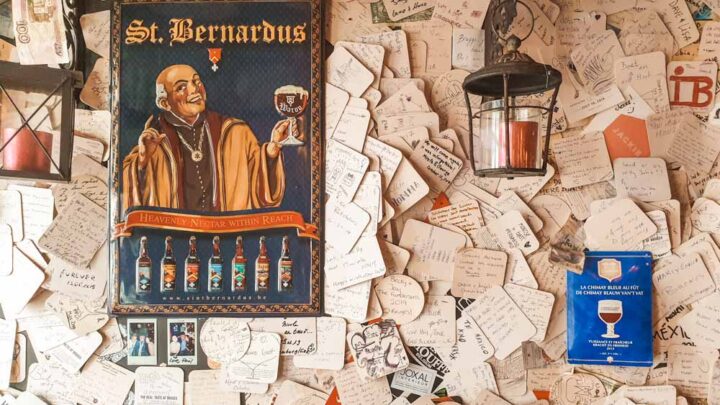
The Bruges Beer Guide: Discovering The City’s Best Beers, Bars + Breweries
Exploring Bruges' thriving beer scene - the best breweries, pubs and more.
Love This? Save and Share on Pinterest!
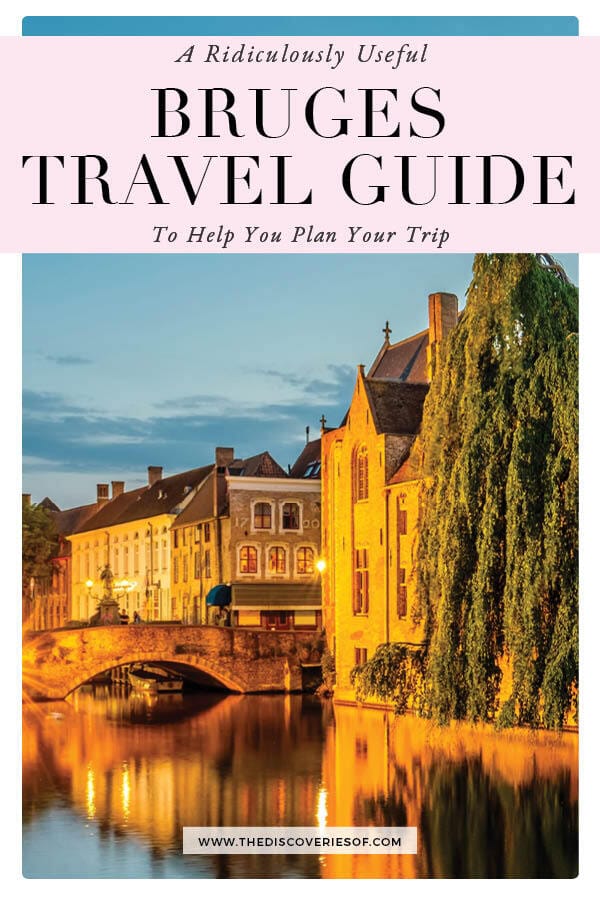
Follow me on Instagram for travel inspiration, tips, and guides.

"Hidden Brugge" private photo tour

Triennial Bruges 2024: Spaces of Possibility - Bike tour - S-wan

BRUGES TRIENNALE 2024 - BRUGES GUIDES

Contemporary architecture - Hello Bruges Tours

Tales and legends - Bruges Guides

"Edges of Brugge" private photo tour

Beastly Bruges - Hello Bruges Tours

Choc around the clock - S-wan Brugge

Quiet Bruges - Bruges Guides

"Essential Brugge" private photo tour

Side streets, great stories about great ladies - Bruges Guides

Convent of the Discaleced Carmelites - Sacred Books - Secret Libraries

A One Day in Bruges Itinerary You’ll Want to Steal
By: Author Sophie Nadeau
Posted on Last updated: 9th March 2023
Categories Belgium , Itineraries
Last Updated on 9th March 2023 by Sophie Nadeau
Small and compact, the Flemish city of Bruges is characterised by its red brick buildings, medieval architecture, and winding canals. Easy to explore on foot, you’ll be pleased to know that you can see most of the city in under 24 hours. Here’s your ultimate guide on how to spend one day in Bruges .
Please note that Bruges is known in Brugge in Flemish. While I would highly recommend visiting the city in of itself over the course of a few days so as to truly soak up all of the attractions, Bruges can also be seen as an easy day trip from Brussels.

Is 1 day enough for Bruges?
Things to know before visiting bruges, the best time to spend one day in bruges, snap a photo of the quay of the rosary, basilica of the holy blood, blinde ezelstraat, climb the belfry, market square (grote markt), have lunch at that’s toast, canal cruise, head to de halve maan brewery, have dinner, drinks at le trappiste, where to stay in bruges, what to wear when exploring europe.
I would say YES, one day is more than enough for Bruges. The city is small, compact, and all of the major attractions are within a few minutes walk of one another.
This, added to the fact that the Belgian city is very touristic, means that you’ll likely see everything you want to see in the space of a day before heading off to another city! You can even do both Bruges and Ghent in one day if you’re really pressed for time, and we actually suggest this in our Belgium itinerary !
This itinerary for 1 day in Bruges is quite intensive and will involve a fair amount of walking. As such, I suggest wearing comfortable shoes such as cute trainers or ankle boots. I don’t recommend wearing any sort of high heel as there are plenty of cobble stones and the two don’t mix well.
The local language spoken in Bruges is Flemish, which is a dialect of Dutch. However, don’t be too worried as Bruges is a very touristic city and so most people working in the tourist industry will have a fantastic level of English.
For even more information about the Belgian city, be sure to check out our guide to the best things to do in Bruges . And for an insider look at the city, be sure to check out our article about the best-kept secrets of Bruges .
The best time to visit the city is from April to June and in September and October when the weather is at its best but the crowds are not too great.
As with many other highly frequented destinations in Europe, you should also be wary for pickpockets. Bruges uses the Euro and, while many places accept cards, some smaller independent businesses remain cash only.

How to spend one day in Bruges
One of the most important things to know before visiting Bruges is that it gets very busy as the city is one of the most popular destinations in Europe.
As such, I would highly recommend heading the the Quay of the Rosary (known as the Rozenhoedkaai in Flemish) first thing in the morning so that you can snap your photos without having to wait in too many crowds!

Located in the iconic Burg Square, the Basilica of the Holy Blood (known as Heilig-Bloedbasiliek in Flemish) is named for a religious relic which is alleged to contain a drop of holy blood that was collected by Joseph of Arimathea.
The ecclesiastical building itself was constructed in the 12th-century and is now considered to be one of the finest examples of Gothic architecture in the city. In a city where almost everything will cost you a fair bit, it’s worth noting that the Basilica itself is free to enter!
Please note that part of the church has now be transformed into a museum, which costs €6 to enter. After leaving the Basilica of the Holy Blood, you’ll want to continue your one day in Bruges by heading down the Blinde Ezelstraat.

Steps away from Burg Square, one of the most narrow and charming streets in Bruges can be found in the form of Blinde Ezelstraat. Literally translated into English as the ‘Blind Donkey Street,’ the cobbled lane features several impressive brick buildings and an archway of the City Hall building. It’s one of the best places to visit in the city and is well-placed to visit the next stop on our tour.

For one of the best bird’s eye views of Bruges that the city has to offer, then I would highly recommend climbing the Belfry. The tower stands at a height of 83 metres and, thanks to the fact that the Belfry (known as Belfort van Brugge in Flemish) can be seen from all over Bruges, it has since become a symbol of the Belgian city.
In order to get to the top, you’ll have to walk over 300 steps (366 steps to be precise). From the top, you can see the moated canal that rings its way around the city, as well as all of the other iconic attractions that Bruges has to offer.
Good to know: It’s best to visit the Belfry earlier in the day as this is one of the top attractions in Bruges, and so can get pretty busy later on, even though tickets are limited. As tickets are limited for the tower, then you’ll want to buy them in advance.

The main market and city square of Bruges is the Grote Markt, which lies in the shadow of the Bruges Belfry. If you happen to be visiting Bruges during Christmas time, then the Grote Markt is where the annual Bruges Christmas Market is held.

One of the best brunch and lunch spots in town is That’s Toast (address Dweersstraat 4, 8000 Brugge, Belgium). As you can imagine from the name, the café serves up delicious dishes based around bread.
There is indoor seating, as well as a lovely little terrace out the back which is best enjoyed on a sunny day. There are vegan and vegetarian options on the menu, as well as speciality coffee.
Unfortunately the restaurant doesn’t take reservations and is instead first come first served. However, the café runs continuously during opening times and so I recommend avoiding peak lunch hours (between 12 and 2 PM) if possible.

After you’ve had a bite to eat, then I recommend escaping the crowds for an hour or so and heading into Minnewater for a little down time- the rest of this 1 day itinerary is pretty packed! Literally translated into English as the ‘love of Lake park,’ this green space features giant chess boards, and even a historic castle.
Minnewater Kasteel has since been transformed into a restaurant and is located in the centre of the park. Though Minnewater is located a short walk away from the city centre, it’s ideally located for heading to the next spot on our one day in Bruges itinerary.

Known as Ten Wijngaerde in Flemish, the term ‘Beguinage’ comes from the French words ‘béguinage’, which is used to denote a housing complex which was constructed so as to house beguines.
These were religious women who lived together as part of a community but didn’t have to take any vows or retire from the world. The beguinage of Bruges was founded in 1245 and women voluntarily practiced a life of religious devotion, though they were free to leave at any time.
Today, the complex comprises of a central green space courtyard (though you’re not allowed on the grass) , a simple church, and 30 houses that were constructed in the 1500s. Be sure to be quiet and respectful when visiting as people still live there today.

Of course, no itinerary for Bruges would be complete without heading out on a canal tour. There are five landing stages where the various visits depart from and tours last for around half an hour.
In this time, a captain will guide you through the iconic Bruges canals, which were originally constructed to serve as shipping lanes for the city and are now classed as UNESCO world heritage sites. Book your Bruges boat tour and guided walking tour here in advance.
I’ve left this tour until later in the day as this will allow you to enjoy all of the beer samples on offer without getting so tired that you can’t enjoy the rest of this Bruges itinerary. The Halve Maan Brewery is a little touristic, but offers one of the best immersive beer experiences in Bruges.
The tour itself takes visitors around the brewery and teaches you about the beer making process, as well as the history of beer in Belgium. The price of every tour ticket includes a complimentary beer. There’s also a souvenir shop where you can buy beer to take home with you.

One thing you should know is that dinner in Bruges does not come cheap, especially if you’re looking for a finer dining experience or indeed wish to go somewhere with a particular romantic ambiance. Some of the top places to eat in Bruges include ONE Restaurant (Arsenaalstraat 55), Bistro Bruut (Meestraat 9), and Je Restaurant (Langestraat 83).
End your one day in Bruges the right way by having drinks at Le Trappiste (address: Kuipersstraat 33, 8000 Brugge, Belgium). Though a little touristic, this bar is recommended on pretty much every Bruges itinerary, and for good reason!
Le Trappiste bar is set against the backdrop of an 800 year old cellar, meaning that it’s completely underground. As well as just over two dozen draught beers, there are plenty of bottled beers on the menu. It’s also possible to buy food. For more information about beer, be sure to check out our beginner’s guide to beer in Belgium .

As a very popular city (one of the most popular travel destinations in Europe), you’ll want to plan ahead and book your accommodation well in advance when it comes to visiting Bruges.
Another option if you want to save money could be to stay in Ghent or Brussels and see Bruges as a day trip. Otherwise, here are some of the best places to stay in Bruges based on location and web-reviews:
Snuffel Hostel: Just a ten minute walk away from the Belfry, this hostel offers a variety of different rooms including mixed and female only dorms. Other amenities include free Wi-Fi, breakfast, and baggage storage. Check prices and availability now.
Hotel Academie Bruges: A four-star hotel which is fairly affordable is Hotel Academie Bruges. Situated in the Onze-Lieve-Vrouw Quarter, colourful rooms are situated a stone’s throw away from all the major attractions in town. Check prices and availability now.
Hotel Dukes’ Palace: For the crème de la crème of Bruges accommodation, consider staying in the five-star Hotel Dukes’ Palace. Situated against the backdrop of a 15th-century palace, amenities include a spa and hot tub. Check prices and availability now.
In the summer, you can’t go wrong by pairing a cute midi dress with classic white tennis shoes for a laid-back smart casual look that’s just as chic for walking around a city’s cobbled lanes as it is for wandering coastal paths. I love this dress and have it in several colour ways. In terms of tennis shoes, this is my go-to shoe.
When it comes to winter in Europe, most places (with the exception of a few islands) can get pretty cold and so warm layers is a must. I find that cute ankle boots like these ones are the perfect mix of practical meets cute.
Shoulder seasons (spring and summer) in Europe tend to come with a mix of rainy and sunny days and so, again, layers are a must. Trench coats and sneakers are the best uniform to explore the continent in.
Finally, a cross-body bag like these ones is a must. I personally use a crossbody bag by this brand and love its shape, size, and versatility. As well as being convenient and compact, it’s one of the safest ways to transport your valuables, all the while looking chic. I also recommend bringing along a travel adapter like this one so you can charge all of your electronics during your stay!
Enjoyed reading about how to spend one day in Bruges? Pin this article now, read it again later:

Sophie Nadeau loves dogs, books, travel, pizza, and history. A Francophile at heart, she runs solosophie.com when she’s not chasing after the next sunset shot or consuming something sweet. She splits her time between Paris and London and travels as much as she can! Subscribe to Sophie’s YouTube Channel.
This site uses Akismet to reduce spam. Learn how your comment data is processed .
Paula Berger
Friday 25th of August 2023
Hi! We are visiting Bruges in May from Wisconsin. Our plan is 2 days in Bruges and one in Ghent. Do you think we could do 1 and a half days in Bruges and take the train to Ghent for the other half? We are taking the train to London after our time in Belgium. Thank you!
Sophie Nadeau
Tuesday 29th of August 2023
Hello! That sounds like a great plan and I am sure you will love Belgium! You could even dedicate one day to each of the cities (i.e. one full day in Bruges and one full day in Ghent instead as Bruges can be pretty busy and is often a little less so).
JAMES CATHRO
Friday 28th of July 2023
Thank you very informative indeed. We are going shortly staying one night. We are going by car(diesel) do I need to pay for ulez zone?
Thursday 10th of August 2023
I visited by train so am unsure about the requirements. I recommend either contacting your hotel ahead of time or alternatively checking your vehicle registration plate against the official LEZ website: https://www.lez.brussels/mytax/
Guided City Tours, Private Tours &
The no. 1 free walking tour in bruges, the highest rated on google & tripadvisor, local guides ✕ (free tour / private tour) city tour / sightseeing storytelling = walking tours bruges, no. 1 bruges free walking tours.
We're proud our free walking tours in Bruges have the highest ratings out of all tour operators.
Specialty Group Tours & Private Tours
Looking for a Belgian food & beer , a teambuilding activity or a private tour? Get in touch!
tour guides storytellers We make history come alive
Small groups and passionate storytellers. That's how we achieved our 5 star rating.
Our Tours & Activites in Bruges lead by local guides
Tell me stories about bruges.

Free Walking Tour Bruges
Forget retired, boring tour guides. Our passionate storytellers bring history to life through stories! And we'll share our recommendations for food, drinks & more!
Bruges Bites & Sights
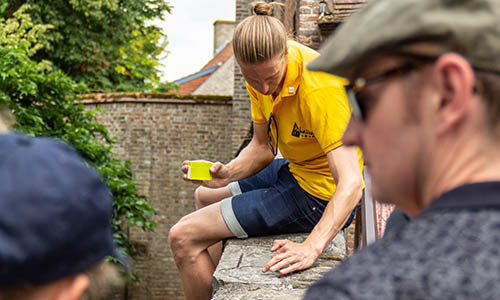
Belgian Food, Beer & History: Tasting Tour
Combine tasting Belgian chocolate, waffles, fries & beer , get to know its fascinating history and see the beautiful city at the same time.
Untold stories: Bruges at Night
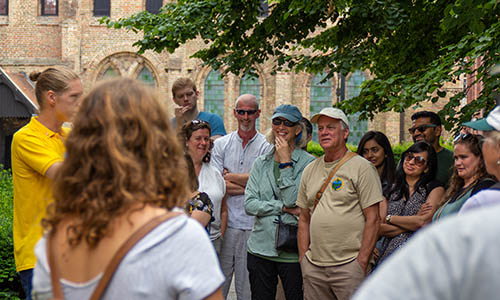
Alternative Night Tour Bruges
Join us at night for a completely different route through our medieval trading district, full of untold stories and legends as well as fascinating history.
2-hour Highlights of Bruges

Bruges Private Tour
Have a storyteller all to yourself. Focus on the highlights, discover the lesser known parts, let us introduce you to Belgian food & drinks or a combination of those!
About Bruges
Discover bruges' rich history and culture with a local guide.
Bruges is known for its well-preserved medieval architecture and picturesque canals. Sometimes called the "Venice of the North" thanks to its looks and function as a trading hub in the Middle Ages.
Wander around, explore the cobblestone streets and gaze at the Gothic architecture. Visit one or more of the many churches and museums. Our storytellers will share their favourites with you.
And, of course, besides the historical and cultural attractions, Bruges is also known for its delicious chocolate and beer. Visitors can indulge in some of Belgium's famous chocolate at one of the many chocolate shops or sample some local brews at one of the city's many bars and pubs.
Kick-start your visit to Bruges by joining one of our guided walking tours in Bruges.
Reviews we are proud of
Left by our guests on independent platforms.
Definitely going to judge all future tours against this one. Pascal was so great and you could feel his love for the city in the tour. We had so much fun with this tour and definitely walked away feeling like we’d gotten the best of Brugge.
We had a wonderful tour with Edward! He was so knowledgeable and friendly and we really got to know the city from a local perspective.
We had a great walking tour with Ray. It was very informative and hit all the must see spots. Ray was a super knowledgeable and fun guy to walk with. I would definitely recommend this to anyone traveling to Bruges.
Frequently Asked Questions
It means that it's a Pay What You Want tour. At the end of the tour, you decide what the tour is worth to you and whether you want to reward the guide accordingly (and according to your budget). That way everyone can enjoy a tour.
We do allow people to join our tours on the spot. If you want to have your spot guaranteed however, booking through our own website here is advised (and it's free and simple).
Yes they do! If we were affraid of a little rain that half of the time we'd have to cancel our tours. Instead we adapt! With some light rain: we try to fix an umbrella for the participants that forgot their own, walk faster and relax once we've found shelter again. With heavy rain: we make sure everyone is properly dressed for bad weather or divert into buildings.
Proud Founding Member of
For years local & independant tour companies like us had to fight against a few global players and large booking platforms extorting us with booking fees. The 2020 global pandemic gave us the opportunity to work on a shared platform.
If you liked our tours then take a look at freetourcommunity.com to find the highest rated free walking tours in 65 cities in 36 countries , carefully curated by an amazing coalition of free tour enthousiasts.
Our Expert Recommendations for Bruges
Made with love.
We walk around the city every day, buy chocolates for our mums, have a waffle in between tours, drink beers with our friends and take our loved ones out for breakfast, lunch and dinner.
With all that experience we've compiled this map with recommendations for Bruges.
For every place on the map you'll find a small description. We also have them grouped per category. Probably easier, so check out our recommendations for Bruges .
Meet our guides

The marketing guy and founder of Ambassadors. Originally from the Netherlands, travelled all over Europe and studied in Brussels and Bruges where he fell in love with history and storytelling.

An art historian with an extensive experience in the art world. Gosia is a world citizen originally from Poland. She lived in Canada, worked as an art expert at Christie's London and now is an amazing storyteller in Bruges.

Professional entertainer, proud dad and one of the first free tour guides in Bruges.

Born and raised in the clay of West-Flanders. Peter quit his job in construction and became a passionate storyteller.

With a passion for history Wendy brings the history of Bruges, Ghent and Ypres to life.

School Principal, educator, proud Guest House owner, storyteller & secretary of Ambassadors.

Born in Venezuela but moved to Belgium for love. Andrés is a fantastic storyteller during the week with a great passion for history. At the weekend he's to be found behind the turntables as a DJ in various clubs in Brussels.

A diving instructor from Aruba, moved to Bruges for love. Kristy loves cooking and telling stories in English and Spanish.

Never a boring teacher. That's why his student are so happy with him. And so will you.

The Perfect 2 to 3 Days in Bruges Itinerary
Last Updated on February 5, 2024
by Audrey Webster
Disclaimer: This article contains affiliate links. That means if you click a link and make a purchase, we may make a small commission. As an Amazon Associate we earn from qualifying purchases. For more information, see our privacy policy.

Located in the Flanders region of Belgium , most people pay a visit to Bruges as a day trip from nearby Ghent or Brussels . While you can get a decent sense of the city in one day, planning a 2 to 3 days in Bruges itinerary is best to get the full experience.
With this amount of time, you’re going to find yourself immersed in so much local culture, cuisine, and history that it might be difficult to know exactly how to spend your days.
Table of Contents
How Many Days in Bruges?
Most visitors consider 2 days in Bruges to be the sweet spot for getting to know the city without running out of things to do. Within two days, you can catch the central landmarks, wander the quaint cobblestone streets, and devour a stack of Belgian waffles. You’ll see a good amount of the city with a pretty packed itinerary.
However, 3 days allows you to explore the city at your leisure, try the different local cuisines, or take a day trip. It’s worth it to take on Bruges (spelled as Brugge in Flemish) at your own pace.
Bear in mind that this beautiful little city is popular with tourists, so it does tend to get busy during Belgium’s peak travel months. The crowds are usually, however, only spending one day in Bruges and the city can clear out in the evenings as day trippers go home.
If you can navigate the crowds for a couple of days, you’ll be rewarded with darling architecture, delicious chocolate, and charming alleys.
Depending on how many days to spend in Bruges you have, you might prioritize visiting historic sites or cultural landmarks. A foodie traveler might consider exploring the many options for waffles and chocolate that Bruges has to offer. Nevertheless, a visit to Bruges is easy to navigate.

Getting To & Around Bruges
The simplest way to get around Bruges is by foot. This is especially true if you’re sticking to the historic city center whose charm makes Bruges famous. In fact, you can cross the entire city in about 30 minutes by foot.
There is a bus system, but it’s only useful for getting from the train station into the city. Even then, the walk from the train station is only about 20 minutes. There is no airport in Bruges–the closest airport is in Brussels.
If you’re arriving into Brussels and heading directly to Bruges, expect the train ride from the Brussels airport to take around 90 minutes. You can view train schedules here. The Bruges train station is located only about a 10-15 minute walk from the old town.
If you’re only coming to the city for one day, it is possible to go on an organised day trip such as this full-day tour from Brussels or this full-day tour from Amsterdam .

2 to 3-Day Bruges Itinerary
Everything during your trip to Bruges can be mixed and matched whether you’re seeing Bruges in 2 days or 3. There are lots of things to do in Bruges, here are our suggestions.
Day 1 – City Center Highlights
Take a walking tour.
One of the best ways to experience Bruges is by foot. You can set out on your own to discover all the unique corners of the city, or if you’d like to learn a little bit more about Bruges, you can take a guided walking tour. You have no shortage of options here.
There are both free and paid guided tours throughout the city. Most tours begin in the city center. If you’re opting for a private and paid guided tour, make sure to book it in advance. Some options include this guided tour or this private tour.
There are three main types of walking tours in Bruges: historic center tours such as this walking tour and boat cruise , food & drink tours such as this beer tour or this food tour with a local , and night tours with an emphasis on local legends and ghost stories such as this dark side of Bruges tour.

Church of Jerusalem
The Church of Jerusalem, or Jerusalem Chapel, is a fascinating slice of history. From the outside, the church might not catch your eye, but that all changes once you step inside.
The chapel is the private one of the Adornes family and was built in 1429 inspired by the Church of the Holy Sepulchre in Jerusalem. As you admire the interior, keep a close eye out for the tomb in the center of the church, the stained glass windows, and the Holy Cross relic.
Today, the chapel is still used by its original family for private events, classical concerts, and lectures. However, visitors can experience the site by paying a small fee and entering through the Adornes Estate.
Market Square & Burg Square
Market Square and Burg Square are the two main squares of shops and restaurants in Bruges. You’ll likely want to stay in an accommodation somewhere around these areas during your weekend in Bruges. Market, or Markt, Square is the more central of the two.
The modest skyline here is dominated by the Belfry of Bruges, an 83-meter-tall tower. You can climb to the top of the tower for a great view out over Bruges. During the winter months, Market Square is adorned with holiday lights and an iconic Christmas market. You can sit on the outdoor patios of restaurants along the square to admire its charm and people-watch.
Burg Square is quieter than Market Square, but no less eye-catching. Look out for the horse-drawn carriages and small green spaces where you can relax on a sunny day.
The city’s administration still exists in the 14th-century Gothic Town Hall that you’ll notice immediately upon entering the square. The buildings here were built over a few centuries, and the diverse architectural styles reflect that. While here, pay a visit to the Basilica of the Holy Blood, the Liberty of Bruges, and the Deanery.

Basilica of the Holy Blood
The Basilica of the Holy Blood is a strange little chapel, which is why it should absolutely be on your Bruges itinerary.
This 12th-century Romanesque chapel is home to a vial containing a cloth believed to be stained with the blood of Christ.
The chapel itself is a beautiful site to explore, but the lore of the stained cloth draws curious visitors from across the world. From the outside, the chapel is small, built snuggly between two neighboring buildings. If you’re walking too quickly, you might go right past it.
There are usually many visitors at this historic landmark, so try to visit early in the morning or late in the evening.


Day 2 – Canal Tour, Museums & More
Take a canal boat tour.
If you’re trying to see as much of Bruges as possible, you should add a canal boat tour to your itinerary. When you first step foot in the city, you’ll quickly notice how canals and waterways weave their way through.
Wandering the city by foot is great, but seeing it from the water provides a new perspective. There are a handful of companies that offer boat rides such as this 2-hour tour to visitors throughout the day, rain or shine. The boat takes riders through the main sections of the canal, between Jan van Eyck Square and the Beguinage.
Tour guides provide unique context and history for the parts of Bruges the boats pass to make it an educational as well as exciting way to spend your time.

Visit the Choco-Story Museum or the Frietmuseum
Chocolate lovers most likely already know Belgium is known for its chocolate. You can take that a step further by visiting the Choco-Story Museum.
Here, you’ll walk through the history of chocolate in Belgium through stories, photos, and taste tests. Walk through the museum to see artefacts from how chocolate has been made over the years and a demonstration of how this delicious chocolate is made. You can book a tour here.
Continue your food experience of Bruges with a visit to the Frietmuseum, or the only known museum dedicated to the history of potatoes.
Potato fries are popular and famous in Belgium. Did you know that fries originate in Belgium? Pay a visit to this museum to learn about the history of fries, how they have been used in other cultures, and how they’re made. You can buy tickets here.
Alternatively, beer lovers should consider heading to the Halve Maan brewery in order to learn more about the brewing process of Belgium’s famed beer and even sample a bit!
Finally, make sure to round out your visit by tasting some of the best fries in the world.
Eat a Belgian waffle
Chances are you’ve eaten a Belgian waffle before. These thick, warm, and delicious waffles can be found in many places around the world.
As the name would suggest, they originate in Belgium, so naturally, you’ll find the best Belgian waffles here. There are many places throughout Bruges to get a tasty waffle. Some are very popular with tourists, so you can expect to wait in line.
Chez Albert is the most famous waffle shop in Bruges and you can get your waffles sweet or savory. Once you’ve secured your waffle, find somewhere comfortable to sit in Market or Burg Square to enjoy your delicious treat.
If you want to learn more about how to make waffles, you can book a 1.5-hour workshop here.
Church of Our Lady & Michelangelo’s Madonna with Child
The Church of Our Lady is a Gothic church with a tower that rises high in the skyline. The tower itself is 115.5 meters tall and made of brick making it the second-tallest of its kind in the world.
Today, the church is known for the amount of priceless art pieces that live safely within its walls. Perhaps the most famous of these pieces is Michelangelo’s Madonna with Child. This marble statue is located front and center.
Make sure to budget some time to admire the many paintings and architecture at your leisure. There’s a lot to see inside the Church of Our Lady.

Day 3 – Ghent, Ostend or Ypres
If you want to venture out of the city when seeing Bruges in 3 days, consider a day trip to somewhere nearby.
Both Bruges and Ghent are considered the fairytale cities of Belgium. Ghent is larger while Bruges has the intimate and charming feel of a small town.
The good news, if you’re staying in Bruges, is that Ghent is only a 30-minute train ride away. Like Bruges, it’s very easy to walk around Ghent but consider calling a taxi or rideshare from the train station.
While in Ghent, make sure to visit Gravensteen, a 10th-century castle with a moat, Saint Bavo’s Cathedral, and Saint Nicholas’ Church. The main square is full of Belgian shopping and restaurants to fill your day trip with delicious food and plenty to explore.
It is also possible to book a half-day tour from Bruges to Ghent.

Shake things up a bit by heading to the coast.
Ostend, coupled with the Ostend Harbor and beachfront, is a great day trip if you want to get away from the tourist crowds. In Ostend, you’ll find historic landmarks from the Second World War, the Saint Peter and Saint Paul Church, and a museum of fine arts.
Ostend Harbor is the main port for ferries heading to Britain, but it has also been a popular local seaside spa destination since the early 1900s. Walk along the beach or the boardwalk to enjoy the fresh ocean air before heading back to Bruges.
History buffs will appreciate a day trip to Ypres. The city captures Belgium’s part throughout 20th century wars, especially a series of battles fought between 1914 and 1918 as part of the First World War.
The most famous landmark is the Menin Gate, which historically served as the starting point for soldiers readying themselves to march into war. For more context on the battles fought here, visit the Hooge Crater Museum.
It’s located inside an old church building that was constructed over a battlefield and showcases plenty of interactive exhibits to help explain the history. Take your time exploring the cathedrals and architecture.
This is another great option if you’re looking for a day trip from Bruges that will most likely get you away from the usual tourist crowds. You can book an organised tour here.

Where to Stay in Bruges
Hotel Fevery – Offering double rooms and rooms with balconies, this 3-star hotel in the centre of Bruges is a good option for mid-range visitors. They offer breakfast, private parking and an on-site bar.
Boutique Hotel Die Swaene – A plush and opulent hotel, this is an excellent choice for those visiting Bruges on a luxury budget. There are several ornate rooms and countless amenities to ensure an excellent stay.
Snuffel Hostel – Boasting a 120-bed capacity, this hostel has both dorms and private rooms, a bar for socialising and a perfect location for exploring all Bruges has to offer.
Not quite what you’re looking for? Click here to browse more Bruges hotels!
Whether you’re a traveler motivated by food, history, or culture, Bruges has something for you. It’s a charming little city full of impressive architecture, historical landmarks, and tasty local food. Use this sample itinerary for Bruges to help guide your trip and enjoy your time.
Are you planning to visit Bruges? Have any questions about this itinerary? Let us know in the comments!

Related Posts:

The Perfect 1, 2 or 3 Days in Antwerp Itinerary

The Perfect 2 to 3 Days in Brussels Itinerary

One Day in Ghent Itinerary: A Day Trip from Brussels

About Audrey Webster
Audrey Webster is a writer for The World Was Here First. She is an Oregon native who has visited countries across the globe and currently spends her weekends exploring the Pacific Northwest and surrounding states. Her approach to traveling combines exploring famous tourist sites and wandering off the beaten path to discover new destinations.
Leave a Comment Cancel reply
Bruges Travel Guide
Book your individual trip , stress-free with local travel experts
- roughguides.com
- Travel guide
- Local Experts
- Travel Advice
- Accommodation
“Somewhere within the dingy casing lay the ancient city,” wrote Graham Greene of BRUGES , “like a notorious jewel, too stared at, talked of, and trafficked over”. And it’s true that Bruges’s reputation as one of the most perfectly preserved medieval cities in western Europe has made it the most popular tourist destination in Belgium, packed with visitors throughout the season. Inevitably, the crowds tend to overwhelm the city, but you’d be mad to come to Flanders and miss the place: its museums hold some of the country’s finest collections of Flemish art, and its intimate, winding streets, woven around a skein of narrow canals and lined with gorgeous ancient buildings, live up to even the most inflated tourist hype. See it out of season, or in the early morning before the hordes have descended, and it can be memorable – though not so much on Mondays, when many of the sights are closed.
Jan van Eyckplein
Kantcentrum & jeruzalemkerk, onze lieve vrouwekerk, st-salvatorskathedraal, the groeninge museum, the hospitaalmuseum and the memling collection.
The obvious place to start an exploration of the city is in the two principal squares: the Markt , overlooked by the mighty belfry, and the Burg , flanked by the city’s most impressive architectural ensemble. Almost within shouting distance, along the Dijver, are the three main museums, among which the Groeninge offers a wonderful sample of early Flemish art. Another short hop brings you to St Janshospitaal and the important paintings of the fifteenth-century artist Hans Memling , as well as Bruges’s most impressive churches, the Onze Lieve Vrouwekerk and St-Salvatorskathedraal .
Further afield, the gentle canals and maze-like cobbled streets of eastern Bruges – stretching out from Jan van Eyckplein – are extraordinarily pretty. The most characteristic architectural feature is the crow-step gable, popular from the fourteenth to the eighteenth century and revived by the restorers of the 1880s and later, but there are also expansive Georgian-style mansions and humble, homely cottages. There are one or two obvious targets here, principally the Kantcentrum (Lace Centre), where you can buy locally made lace and watch its manufacture, and the city’s most unusual church, the adjacent Jeruzalemkerk . Above all, however, eastern Bruges excels in the detail, surprising the eye again and again with its sober and subtle variety, featuring everything from intimate arched doorways and bendy tiled roofs to wonky chimneys and a bevy of discrete shrines and miniature statues.
Brief history
Bruges started out as a ninth-century fortress built by the warlike first count of Flanders, Baldwin Iron Arm , who was intent on defending the Flemish coast from Viking attack. The settlement prospered, and by the fourteenth century it shared effective control of the cloth trade with its two great rivals, Ghent and Ypres (now Ieper), turning high-quality English wool into clothing that was exported all over the known world. An immensely profitable business, it made the city a focus of international trade, and at its peak the town was a key member of – and showcase for the products of – the Hanseatic League , the most powerful economic alliance in medieval Europe. Through the harbours and docks of Bruges, Flemish cloth and Hansa goods were exchanged for hogs from Denmark, spices from Venice, hides from Ireland, wax from Russia, gold and silver from Poland and furs from Bulgaria. The business of these foreign traders was protected by no fewer than 21 consulates, and the city developed a wide range of support services, including banking, money-changing, maritime insurance and an elementary shipping code, known as the Roles de Damme .
Despite (or perhaps because of) this lucrative state of affairs, Bruges was dogged by war . Its weavers and merchants were dependent on the goodwill of the kings of England for the proper functioning of the wool trade, but their feudal overlords, the counts of Flanders, and their successors, the dukes of Burgundy (from 1384), were vassals of the rival king of France . Although some of the dukes and counts were strong enough to defy their king, most felt obliged to obey his orders and thus take his side against the English when the two countries were at war. This conflict of interests was compounded by the designs the French monarchy had on the independence of Bruges itself. Time and again, the French sought to assert control over the cities of West Flanders, but more often than not they encountered armed rebellion. In Bruges, Philip the Fair precipitated the most famous insurrection at the beginning of the fourteenth century. Philip and his wife, Joanna of Navarre, had held a grand reception in Bruges, but it had only served to feed their envy. In the face of the city’s splendour, Joanna moaned, “I thought that I alone was Queen, but here in this place I have six hundred rivals”. The opportunity to flex royal muscles came shortly afterwards when the city’s guildsmen flatly refused to pay a new round of taxes. Enraged, Philip dispatched an army to restore order and garrison the town, but at dawn on Friday May 18, 1302, a rebellious force of Flemings crept into the city and massacred Philip’s sleepy army – an occasion later known as the Bruges Matins : anyone who couldn’t correctly pronounce the Flemish shibboleth schild en vriend (“shield and friend”) was put to the sword. There is a statue celebrating the leaders of the insurrection – Jan Breydel and Pieter de Coninck – in the Markt.
The Habsburgs , who inherited Flanders – as well as the rest of present-day Belgium and Holland in 1482 – whittled away at the power of the Flemish cities, no one more so than Charles V , the ruler of a vast kingdom that included the Low Countries and Spain. As part of his policy, Charles favoured Antwerp at the expense of Flanders, and to make matters worse, the Flemish cloth industry began its long decline in the 1480s. Bruges was especially badly hit and, as a sign of its decline, failed to dredge the silted-up River Zwin , the town’s trading lifeline to the North Sea. By the 1510s, the stretch of water between Sluis and Damme was only navigable by smaller ships, and by the 1530s the city’s sea trade had collapsed completely. Bruges simply withered away, its houses deserted, its canals empty and its money spirited north with the merchants.
Some four centuries later, Georges Rodenbach ’s novel Bruges-la-Mort e alerted well-heeled Europeans to the town’s aged, quiet charms, and Bruges – frozen in time – escaped damage in both world wars to emerge as the perfect tourist attraction.
Tailor-made travel itineraries for Belgium, created by local experts

8 days / from 2808 USD
The best of the Netherlands and Belgium
This trip will bring you the best of two countries: the Netherlands and Belgium. From the quaint streets, canals and windmills of Holland to beer and Belgium chocolate tasting in three beautiful Belgium cities. This trip has it all.

9 days / from 3024 USD
Experience the Liberation Route in BeNeLux
Explore the path of the World War II Liberation Route through Belgium, Luxembourg and the Netherlands. Visit important landmarks and museums on the way with this self drive itinerary, with enough time to explore cities such as Brussels and Rotterdam on the way.

10 days / from 5616 USD
Taste of Three - Belgium, France and Switzerland
Start your journey in Belgium and explore Brussels, Ghent and Bruges. A high-speed train will then take you to Strasbourg, from where you'll discover the Alsace. Proceed to Basel as your base, from where you'll see plenty of Switzerland: Zermatt, Matterhorn, Mount Pilatus and much more.
Tailor-made trips for Belgium
Jan van Eyckplein , a five-minute walk north of the Markt, is one of the prettiest squares in Bruges, its cobbles backdropped by the easy sweep of the Spiegelrei canal. The centrepiece of the square is an earnest statue of Van Eyck , erected in 1878, whilst on the north side is the Tolhuis , whose fancy Renaissance entrance is decorated with the coat of arms of the dukes of Luxembourg, who long levied tolls here. The Tolhuis dates from the late fifteenth century, but was extensively remodelled in medieval style in the 1870s, as was the Poortersloge (Merchants’ Lodge), whose slender tower pokes up above the rooftops on the west side of the square. Theoretically, any city merchant was entitled to be a member of the Poortersloge, but in fact membership was restricted to the richest and the most powerful. An informal alternative to the Town Hall, it was here that key political and economic decisions were taken – and this was also where local bigwigs could drink and gamble discreetly.
Beyond the east end of the Spiegelrei canal is an old working-class district, whose low brick cottages surround a substantial complex of buildings that originally belonged to the wealthy Adornes family, who migrated here from Genoa in the thirteenth century. Inside the complex, the Kantcentrum (Lace Centre), on the right-hand side of the entrance, has a busy workshop and offers very informal demonstrations of traditional lacemaking in the afternoon (no set times). They sell the stuff too – both here and in the shop at the ticket kiosk – but it isn’t cheap: a smallish Bruges table mat, with two swans, for example, costs €20–25; if you fancy having a go yourself, the shop sells all the gubbins.
Across the passageway from the Kantcentrum is one of the city’s real oddities, the Jeruzalemkerk (Jerusalem Church; same times & ticket as the Kantcentrum), which was built by the Adornes family in the fifteenth century as an approximate copy of the Church of the Holy Sepulchre in Jerusalem after one of their number, Pieter, had returned from a pilgrimage to the Holy Land. The interior is on two levels: the lower one is dominated by a large and ghoulish altarpiece, decorated with skulls and ladders, in front of which is the black marble tomb of Anselm Adornes, the son of the church’s founder, and his wife Margaretha. There’s more grisliness at the back of the church, where the small vaulted chapel holds a replica of Christ’s tomb – you can glimpse the imitation body down the tunnel behind the iron grating. To either side of the main altar, steps ascend to the choir, which is situated right below the eccentric, onion-domed lantern tower.
Next door to the Gruuthuse, the Onze Lieve Vrouwekerk is a rambling shambles of a building, a clamour of different dates and styles whose brick spire is – at 122m – one of the tallest in Belgium. Entered from the south, the nave was three hundred years in the making, an architecturally discordant affair, whose thirteenth-century grey-stone central aisle is the oldest part of the church. The central aisle blends in with the south aisle, but the later, fourteenth-century north aisle doesn’t mesh at all – even the columns aren’t aligned. This was the result of changing fashions, not slapdash work: the High Gothic north aisle was intended to be the start of a complete remodelling of the church, but the money ran out before the work was finished.
In the south aisle is the church’s most acclaimed objet d’art, a delicate marble Madonna and Child by Michelangelo . Purchased by a Bruges merchant, this was the only one of Michelangelo’s works to leave Italy during the artist’s lifetime and it had a significant influence on the painters then working in Bruges, though its present setting – beneath gloomy stone walls and set within a gaudy Baroque altar – is hardly prepossessing.
Michelangelo apart, the most interesting part of the church is the chancel beyond the black and white marble rood screen. Here you’ll find the mausoleums of Charles the Bold and his daughter Mary of Burgundy, two exquisite examples of Renaissance carving, their side panels decorated with coats of arms connected by the most intricate of floral designs. The royal figures are enhanced in the detail, from the helmet and gauntlets placed gracefully by Charles’s side to the pair of watchful dogs nestled at Mary’s feet. Oddly enough, the hole dug by archeologists beneath the mausoleums during the 1970s to discover who was actually buried here was never filled in, so you can see Mary’s coffin, the urn containing the heart of her son and the burial vaults of several unknown medieval dignitaries, three of which have now been moved across to the Lanchals Chapel.
Just across the ambulatory from the mausoleums is the Lanchals Chapel , which holds the imposing Baroque gravestone of Pieter Lanchals, a one-time Habsburg official who had his head lopped off by the citizens of Bruges for corruption in 1488. In front of the Lanchals gravestone are three relocated medieval burial vaults , each plastered with lime mortar. The inside walls of the vaults sport brightly coloured grave frescoes , a type of art which flourished hereabouts from the late thirteenth to the middle of the fifteenth century. The iconography is fairly consistent, with the long sides mostly bearing one, sometimes two, angels apiece, and most of the angels are shown swinging thuribles (the vessels in which incense is burnt during religious ceremonies). Typically, the short sides show the Crucifixion and a Virgin and Child. The background decoration is more varied with crosses, stars and dots all making appearances as well as two main sorts of flower – roses and bluebells. The frescoes were painted freehand and executed at great speed – Flemings were then buried on the day they died – hence the delightful immediacy of the work.
The earthly remains of Mary of Burgundy and Charles the Bold
The last independent rulers of Flanders were Charles the Bold , the Duke of Burgundy, and his daughter Mary of Burgundy , both of whom died in unfortunate circumstances, Charles during the siege of the French city of Nancy in 1477, she after a riding accident in 1482, when she was only 25. Mary was married to Maximilian , a Habsburg prince and future Holy Roman Emperor, who inherited her territories on her death – thus, at a dynastic stroke, Flanders was incorporated into the Habsburg empire.
In the sixteenth century, the Habsburgs relocated to Spain, but they were keen to emphasize their connections with – and historical authority over – Flanders, one of the richest parts of their expanding empire. Nothing did this quite as well as the ceremonial burial – or reburial – of bits of royal body. Mary was safely ensconced in Bruges’s Onze Lieve Vrouwekerk, but the body of Charles was in a makeshift grave in Nancy . The Emperor Charles V, the great grandson of Charles the Bold, had – or thought he had – this body exhumed and carried to Bruges, where it was reinterred next to Mary. There were, however, persistent rumours that the French, the traditional enemies of the Habsburgs, had deliberately handed over a dud skeleton, specifically one of the knights who died in the same engagement. In the 1970s, archeologists had a bash at solving the mystery. They dug beneath Charles and Mary’s mausoleums in the Onze Lieve Vrouwekerk , but, among the assorted tombs, they failed to authoritatively identify either the body or even the tomb of Charles; Mary proved more tractable, with her skeleton confirming the known details of her hunting accident. Buried alongside her also was the urn which contained the heart of her son, Philip the Fair, placed here in 1506.
From St Janshospitaal, it’s a couple of minutes’ walk north to St-Salvatorskathedraal (Holy Saviour Cathedral) a bulky Gothic edifice that mostly dates from the late thirteenth century, though the ambulatory was added some two centuries later. A parish church for most of its history, it was only made a cathedral in 1834 following the destruction of St Donatian’s by the French. This change of status prompted lots of ecclesiastical rumblings – nearby Onze Lieve Vrouwekerk was bigger and its spire higher – and when part of St Salvators went up in smoke in 1839, the opportunity was taken to make its tower higher and grander in a romantic rendition of the Romanesque style.
Recently cleaned, the cathedral’s nave has emerged from centuries of accumulated grime, but it remains a cheerless, cavernous affair. The star turn is the set of eight paintings by Jan van Orley displayed in the transepts. Commissioned in the 1730s, the paintings were used for the manufacture of a matching set of tapestries from a Brussels workshop and, remarkably enough, these have survived too and hang in sequence in the choir and nave. Each of the eight scenes is a fluent, dramatic composition featuring a familiar episode from the life of Christ – from the Nativity to the Resurrection – complete with a handful of animals, including a remarkably determined Palm Sunday donkey. The tapestries are actually mirror images of the paintings as the weavers worked with the rear of the tapestries uppermost on their looms; the weavers also had sight of the tapestry paintings – or rather cartoon copies, as the originals were too valuable to be kept beside the looms.
Entered from the nave, the cathedral Schatkamer occupies the adjoining neo-Gothic chapter house, whose nine rooms are packed with ecclesiastical tackle, from religious paintings and statues through to an assortment of reliquaries, vestments and croziers. The labelling is poor, however, so it’s a good idea to pick up the English-language mini-guide at the entrance. Room B holds the treasury’s finest painting, a gruesome, oak-panel triptych, The Martyrdom of St Hippolytus , by Dieric Bouts (1410–1475) and Hugo van der Goes (d. 1482). The right panel depicts the Roman Emperor Decius, a notorious persecutor of Christians, trying to persuade the priest Hippolytus to abjure his faith. He fails, and in the central panel Hippolytus is pulled to pieces by four horses.
From the east side of the Markt, Breidelstraat leads through to the city’s other main square, the Burg , named after the fortress built here by the first count of Flanders, Baldwin Iron Arm, in the ninth century. The fortress disappeared centuries ago, but the Burg long remained the centre of political and ecclesiastical power with the Stadhuis (which has survived) on one side and St-Donaaskathedraal (which hasn’t) on the other. The French army destroyed the cathedral in 1799 and although the foundations were laid bare in the 1950s, they were promptly re-interred – they lie in front of and underneath the Crowne Plaza Hotel .
The southern half of the Burg is fringed by the city’s finest group of buildings, beginning on the right with the Heilig Bloed Basiliek (Basilica of the Holy Blood) named after the holy relic that found its way here in the Middle Ages. The church divides into two parts. Tucked away in the corner, the lower chapel is a shadowy, crypt-like affair, originally built at the beginning of the twelfth century to shelter another relic, that of St Basil, one of the great figures of the early Greek Church. The chapel’s heavy and simple Romanesque lines are decorated with just one relief, carved above an interior doorway and showing the baptism of Basil in which a strange giant bird, representing the Holy Spirit, plunges into a pool of water.
Next door, approached up a wide, low-vaulted curving staircase, the upper chapel was built a few years later, but has been renovated so frequently that it’s impossible to make out the original structure; it also suffers from excessively rich nineteenth-century decoration. The building may be disappointing, but the large silver tabernacle that holds the rock-crystal phial of the Holy Blood is simply magnificent, being the gift of Albert and Isabella of Spain in 1611. One of the holiest relics in medieval Europe, the phial of the Holy Blood purports to contain a few drops of blood and water washed from the body of Christ by Joseph of Arimathea. Local legend asserts that it was the gift of Diederik d’Alsace, a Flemish knight who distinguished himself by his bravery during the Second Crusade and was given the phial by a grateful patriarch of Jerusalem in 1150. It is, however, rather more likely that the relic was acquired during the sacking of Constantinople in 1204, when the Crusaders simply ignored their collective job description and robbed and slaughtered the Byzantines instead – hence the historical invention. Whatever the truth, after several weeks in Bruges, the relic was found to be dry, but thereafter it proceeded to liquefy every Friday at 6pm until 1325, a miracle attested to by all sorts of church dignitaries, including Pope Clement V.
The phial of the Holy Blood is still venerated and, despite modern scepticism, reverence for it remains strong. It’s sometimes available for visitors to touch under the supervision of a priest inside the chapel, and on Ascension Day (mid-May). it’s carried through the town centre in a colourful but solemn procession, the Heilig-Bloedprocessie , a popular event for which grandstand tickets are sold at the main tourist office from March 1.
The shrine that holds the phial during the procession is displayed in the tiny Schatkamer , next to the upper chapel. Dating to 1617, it’s a superb piece of work, the gold and silver superstructure encrusted with jewels and decorated with tiny religious figures. The treasury also contains an incidental collection of ecclesiastical bric-a-brac plus a handful of old paintings. Look out also, above the treasury door, for the faded strands of a locally woven seventeenth-century tapestry depicting St Augustine’s funeral, the sea of helmeted heads, torches and pikes that surround the monks and abbots very much a Catholic view of a muscular State supporting a holy Church.
The Groeninge Museum possesses one of the world’s finest samples of early Flemish paintings, from Jan van Eyck through to Hieronymus Bosch and Jan Provoost. These paintings make up the kernel of the museum’s permanent collection, but there are later (albeit lesser) pieces on display too, reaching into the twentieth century, with works by the likes of Constant Permeke and Paul Delvaux.
Arguably the greatest of the early Flemish masters, Jan van Eyck (1385–1441) lived and worked in Bruges from 1430 until his death eleven years later. He was a key figure in the development of oil painting, modulating its tones to create paintings of extraordinary clarity and realism. The Groeninge has two gorgeous examples of his work, beginning with the miniature portrait of his wife, Margareta van Eyck , painted in 1439 and bearing his motto, “als ich can” (the best I can do). The painting is very much a private picture and one that had no commercial value, marking a small step away from the sponsored art – and religious preoccupations – of previous Flemish artists. The second Eyck painting is the remarkable Madonna and Child with Canon George van der Paele , a glowing and richly symbolic work with three figures surrounding the Madonna: the kneeling canon, St George (his patron saint) and St Donatian, to whom he is being presented. St George doffs his helmet to salute the infant Christ and speaks by means of the Hebrew word “ Adonai ” (Lord) inscribed on his chin strap, while Jesus replies through the green parrot in his left hand: folklore asserted that this type of parrot was fond of saying “ Ave ”, the Latin for welcome. The canon’s face is exquisitely executed, down to the sagging jowls and the bulging blood vessels at his temple, while the glasses and book in his hand add to his air of deep contemplation. Audaciously, van Eyck has broken with tradition by painting the canon among the saints rather than as a lesser figure – a distinct nod to the humanism that was gathering pace in contemporary Bruges.
The Groeninge possesses two fine and roughly contemporaneous copies of paintings by Rogier van der Weyden (1399–1464), one-time official city painter to Brussels. The first is a tiny Portrait of Philip the Good , in which the pallor of the duke’s aquiline features, along with the brightness of his hatpin and chain of office, are skilfully balanced by the sombre cloak and hat. The second and much larger painting, St Luke painting the Portrait of Our Lady , is a rendering of a popular if highly improbable legend that Luke painted Mary – thereby becoming the patron saint of painters. The painting is notable for the detail of its Flemish background and the cheeky-chappie smile of the baby Christ.
Also noteworthy is the spookily stark Surrealism of Paul Delvaux ’s (1897–1994) Serenity . One of the most interesting of Belgium’s modern artists, Delvaux started out as an Expressionist but came to – and stayed with – Surrealism in the 1930s. This painting is a classic example of his oeuvre and, if it whets your artistic appetite, you might consider visiting Delvaux’s old home, in St-Idesbald, which has been turned into a museum with a comprehensive selection of his paintings (see The Atlantikwall).
The Groeninge also owns a couple of minor oils and a number of etchings and drawings by James Ensor (1860–1949), one of Belgium’s most innovative painters, and Magritte ’s (1898–1967) characteristically unnerving The Assault ; for more on Magritte
Opposite the entrance to the Onze Lieve Vrouwekerk is St-Janshospitaal , a sprawling complex that sheltered the sick of mind and body until well into the nineteenth century. The oldest part – at the front on Mariastraat, behind two church-like gable ends – has been turned into the slick Hospitaalmuseum, while the nineteenth-century annexe, reached along a narrow passageway on the north side of the museum, has been converted into a really rather tatty exhibition-cum-shopping centre called – rather confusingly – Oud St-Jan .
The Hospitaalmuseum divides into two, with one large section – in the former hospital ward – exploring the historical background to the hospital through documents, paintings and religious objets d’art. Highlights include a pair of sedan chairs used to carry the infirm to the hospital in emergencies, and Jan Beerblock’s The Wards of St Janshospitaal , a minutely detailed painting of the hospital ward as it was in the late eighteenth century, the patients tucked away in row upon row of tiny, cupboard-like beds. Other noteworthy paintings include an exquisite Deposition of Christ , a late fifteenth-century version of an original by Rogier van der Weyden, and a stylish, intimately observed diptych by Jan Provoost, with portraits of Christ and the donor – a friar - on the front and a skull on the back.
The old chapel inside the Hospitaalmuseum displays six wonderful paintings by Hans Memling (1433–1494). Born near Frankfurt, Memling spent most of his working life in Bruges, where Rogier van der Weyden instructed him. He adopted much of his tutor’s style and stuck to the detailed symbolism of his contemporaries, but his painterly manner was distinctly restrained, often pious and grave. Graceful and warmly coloured, his figures also had a velvet-like quality that greatly appealed to the city’s burghers, whose enthusiasm made Memling a rich man – in 1480 he was listed among the town’s major moneylenders.
Of the six works on display, the most unusual is the Reliquary of St Ursula , comprising a miniature wooden Gothic church painted with the story of St Ursula. Memling condensed the legend into six panels with Ursula and her ten companions landing at Cologne and Basle before reaching Rome at the end of their pilgrimage. Things go badly wrong on the way back: they leave Basle in good order, but are then – in the last two panels – massacred by Huns as they pass through Germany. Memling had a religious point to make, but today it’s the mass of incidental detail that makes the reliquary so enchanting, providing an intriguing evocation of the late medieval world. Equally delightful is the Mystical Marriage of St Catherine , the middle panel of a large triptych depicting St Catherine, who represents contemplation, receiving a ring from the baby Jesus to seal their spiritual union. The complementary side panels depict the beheading of St John the Baptist and a visionary St John writing the Book of Revelation on the bare and rocky island of Patmos. Again, it’s the detail that impresses: between the inner and outer rainbows above St John, for instance, the prophets play music on tiny instruments – look closely and you’ll spy a lute, a flute, a harp and a hurdy-gurdy. Across the chapel are two more Memling triptychs, a Lamentation and an Adoration of the Magi , in which there’s a gentle nervousness in the approach of the Magi, here shown as the kings of Spain, Arabia and Ethiopia.
Memling’s skill as a portraitist is demonstrated to exquisite effect in his Portrait of a Young Woman , where the richly dressed subject stares dreamily into the middle distance, her hands – in a superb optical illusion – seeming to clasp the picture frame. The lighting is subtle and sensuous, with the woman set against a dark background, her gauze veil dappling the side of her face. A high forehead was then considered a sign of great womanly beauty, so her hair is pulled right back and was probably plucked – as are her eyebrows. There’s no knowing who the woman was, but in the seventeenth century her fancy headgear convinced observers that she was one of the legendary Persian sibyls who predicted Christ’s birth; so convinced were they that they added the cartouche in the top left-hand corner, describing her as Sibylla Sambetha – and the painting is often referred to by this name.
The sixth and final painting, the Virgin and Martin van Nieuwenhove diptych, is exhibited in the adjoining side chapel. Here, the eponymous merchant has the flush of youth and a hint of arrogance: his lips pout, his hair cascades down to his shoulders and he is dressed in the most fashionable of doublets – by the middle of the 1480s, when the portrait was commissioned, no Bruges merchant wanted to appear too pious. Opposite, the Virgin gets the full stereotypical treatment from the oval face and the almond-shaped eyes through to full cheeks, thin nose and bunched lower lip.
At the heart of Bruges is the Markt , an airy open space edged on three sides by rows of gabled buildings and with horse-drawn buggies clattering over the cobbles. The burghers of nineteenth-century Bruges were keen to put something suitably civic in the middle of the square and the result was the conspicuous monument to the leaders of the Bruges Matins, Pieter de Coninck, of the guild of weavers, and Jan Breydel, dean of the guild of butchers. Standing close together, they clutch the hilt of the same sword, their faces turned to the south in slightly absurd poses of heroic determination.
The biscuit-tin buildings flanking most of the Markt form a charming architectural chorus, their mellow ruddy-brown brick shaped into a long string of pointed gables, each gable of which is compatible with but slightly different from its neighbour. Most are late nineteenth- or even twentieth-century re-creations – or re-inventions – of older buildings, though the old post office , which hogs the east side of the square, is a thunderous neo-Gothic edifice that refuses to camouflage its modern construction. The Craenenburg Café , on the corner of St Amandsstraat at Markt 16, occupies a modern building too, but it marks the site of the eponymous medieval mansion in which the guildsmen of Bruges imprisoned the Habsburg heir, Archduke Maximilian, for three months in 1488. The reason for their difference of opinion was the archduke’s efforts to limit the city’s privileges, but whatever the justice of their cause, the guildsmen made a big mistake. Maximilian made all sorts of promises to escape their clutches, but a few weeks after his release his father, the Emperor Frederick III, turned up with an army to take imperial revenge. Maximilian became emperor in 1493 and he never forgave Bruges, doing his considerable best to push trade north to its great rival, Antwerp.
Discover more places in Belgium

- Travel Guide Morocco
- Travel Guide Namibia
- Travel Guide South Africa
- Travel Guide China
- Travel Guide India
- Travel Guide Indonesia
- Travel Guide Japan
- Travel Guide Laos
- Travel Guide Malaysia
- Travel Guide Myanmar (Burma)
- Travel Guide Nepal
- Travel Guide Philippines
- Travel Guide Singapore
- Travel Guide South Korea
- Travel Guide Sri Lanka
- Travel Guide Taiwan
- Travel Guide Thailand
- Travel Guide Australia
- Travel Guide Fiji
- Travel Guide New Zealand
- Travel Guide Belize
- Costa Rica Travel Guide
- Travel Guide Cuba
- Travel Guide Guatemala
- Travel Guide Honduras
- Travel Guide Jamaica
- Travel Guide Nicaragua
- Travel Guide Panama
- Travel Guide Puerto Rico
- Travel Guide Trinidad and Tobago
- Travel Guide Albania
- Travel Guide Austria
- Travel Guide Belgium
- Travel Guide Bosnia-Herzegovina
- Travel Guide Bulgaria
- Travel Guide Cyprus
- Travel Guide Czechia (Czech Republic)
- Travel Guide Denmark
- Travel Guide England
- Travel Guide Estonia
- Travel Guide Finland
- Travel Guide France
- Travel Guide Germany
- Travel Guide Greece
- Travel Guide Hungary
- Iceland Travel Guide
The Rough Guides to Belgium and related travel guides
In-depth, easy-to-use travel guides filled with expert advice.
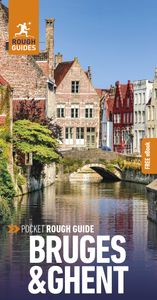
Find even more inspiration here

Planning your own trip? Prepare for your trip
Use Rough Guides' trusted partners for great rates
written by Rough Guides Editors
updated 30.04.2021
Ready to travel and discover Belgium?
Get support from our local experts for stress-free planning & worry-free travels.
- Where to stay
- Travel advice
Nomadic Matt's Travel Site
Travel Better, Cheaper, Longer
Bruges Travel Guide
Last Updated: April 3, 2024
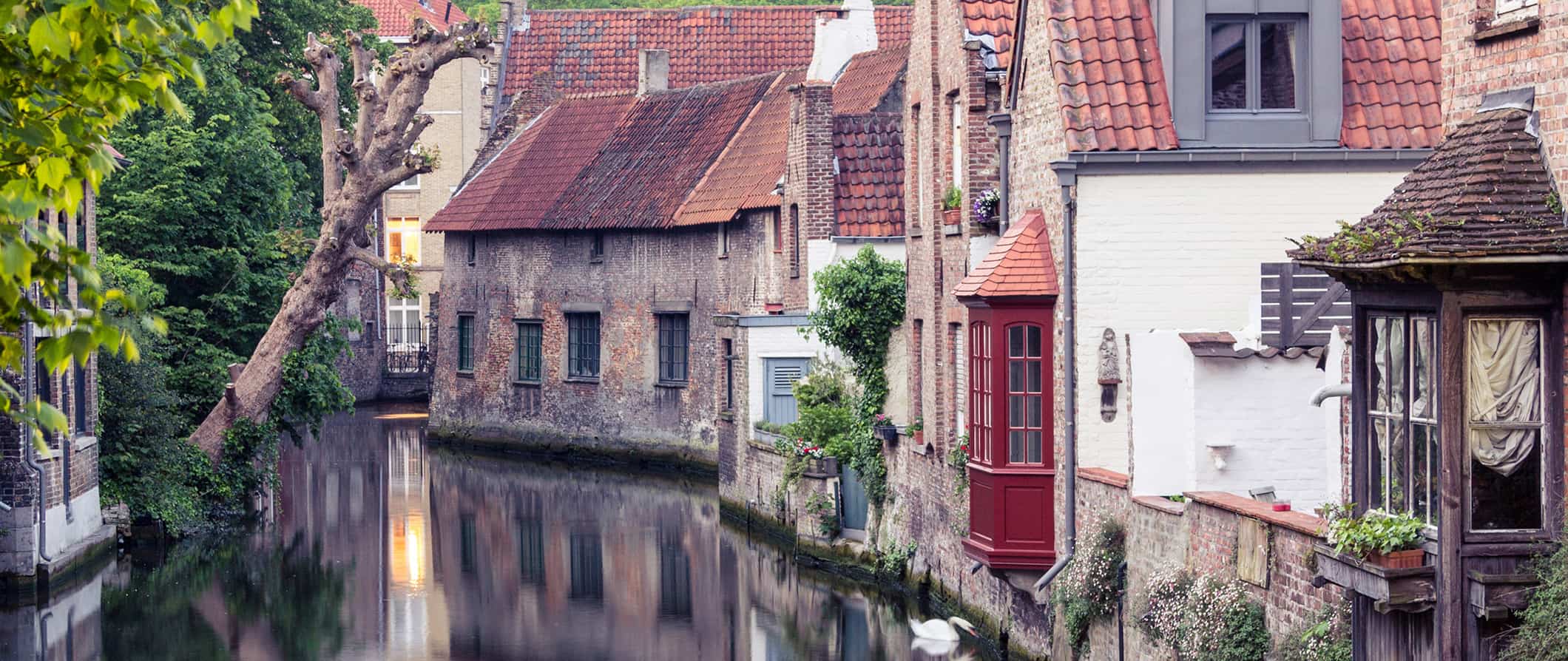
Bruges is one of the main reasons people visit Belgium . It’s one of the most famous medieval cities in Europe, boasting historic buildings, scenic canals, and attractive cobblestone streets. The entire historic center is recognized as a UNESCO World Heritage Site.
The first fortifications here were built in the 1st century BCE though the city didn’t prosper until the Middle Ages when it became an economic hub under the Hanseatic League. It was also home to the world’s first stock exchange (the Bourse), which opened in the 14th century.
Naturally, I found Bruges to be a very charming place to visit. It’s also expensive and touristy and there aren’t a lot of backpackers or budget travelers in Bruges due to the high prices.
That said, if you pass through Belgium, you’d be missing out if you don’t stop and visit Bruges for at least a night. Feast on waffles and chocolate, cruise the canals, and get your cultural fix while perusing the artwork at the Groeninge Museum. There is enough to keep you busy here for a day or two without busting your budget.
This Bruges travel guide can help you plan your trip, save money, and ensure you make the most of your time in this picturesque medieval town!
Table of Contents
- Things to See and Do
- Typical Costs
- Suggested Budget
- Money-Saving Tips
- Where to Stay
- How to Get Around
- How to Stay Safe
- Best Places to Book Your Trip
- Related Blogs on Bruges
Top 5 Things to See and Do in Bruges

1. Take a canal tour
Taking a canal trip down the arteries of Bruges is the perfect way to capture the magic of the city. A half-hour boat trip takes you around secret gardens, picturesque bridges, and ornate medieval buildings. It’s a great way to learn about the city from a different angle. Several companies operate these tours with pretty similar open-air boats that fit 30-40 people and following similar routes. Tours cost around 12-15 EUR, or you can take this combo canal and walking tour for the best of both worlds.
2. Admire Grote Markt
This is the city’s beautiful and medieval central square, dating all the way back to 958 CE. It’s stunning to see, though I’d advise skipping the restaurants here as they are overpriced. Look out for Huis Bouchoute with its giant compass (which points towards the direction of the wind rather than true North), the Provincial Palace, and other museums, including Historium Bruges, the Bruges Beer Experience, and the Salvador Dalí Exhibition – Bruges.
During Christmas, this area is transformed into a gorgeous Christmas market with its very own ice-skating rink which is part of the city’s ‘Winter Glow’, the collective name for the winter activities and decorations. Bruges’ Christmas markets run from late November until the first week of January.
3. See The Burg
The Burg is a city square that was completed in 1376. It boasts Gothic stone décor including the city hall (Stadhuis) which also contains a history museum featuring a small exhibit on the history of the city and impressive vaulted gothic hall with 20th-century murals depicting important historical events. Entry is 8 EUR.
The Basilica of the Holy Blood is also located here (so-called because it supposedly houses a relic of Jesus’s blood). Inside the church, there are two distinct areas: the Romanesque-style lower chapel and the ornate and colorful upper chapel. Entry to the basilica is free, while admission to the associated museum is 5 EUR.
4. Feast on chocolate
With dozens and dozens of chocolate boutiques, a chocolate museum, a chocolate trail, and a chocolate fair, this city is a chocolate-lovers paradise. You’ll find more of the higher-end, refined chocolate in this city — but it’s worth splurging on. Pay a visit to Dumon Artisanal Chocolatiers, BbyB or The Chocolate Line which all whip up a variety of interesting chocolate collections, shapes and flavors in-house. Consider taking a chocolate-making workshop to make your own Belgian chocolates!
5. See the Belfort Belfry
This 83-meter-tall (272 feet) bell tower is one of Bruges’ best-known landmarks. It once housed the treasury and the municipal archives and was used for spotting fires and other threats. After (somewhat ironically) being destroyed by fire one too many times, the belfry was never rebuilt and now only the tower remains. The 47 bells in the tower are played for an hour on Wednesdays, Saturdays and Sundays from 11am and over the summer in special concerts.
If you have 30 minutes to an hour to spare and there’s not much of a queue, it’s worth the climb up the 366 steps to the top to enjoy some spectacular and panoramic views of the city. It costs 15 EUR.
Other Things to See and Do in Bruges
1. visit the groeninge museum.
The Groeninge Museum, also known as the Fine Arts Museum of Bruges is one of the most popular museums in the city, exhibiting works from Bruges’ own Jan van Eyck (a 15th-century master). There is also a world-famous collection of paintings by the Flemish Primitives (artists active in the Burgundian and Habsburg Netherlands during the 15th- and 16th-century). Admission is 15 EUR.
2. Take a hot air balloon ride
While not exactly budget-friendly (prices are around 200 EUR per person) this is a really neat way to see the city from a new perspective. You can spot Bruges’ most iconic buildings and squares from above and scan the green fields as far as your eye can see. Some operators offer both morning and evening flight options too. It’s a cool option for anyone feeling adventurous or in the mood for some romance.
3. Sample the beer
Like the rest of Belgium, there’s a lot of good beer in Bruges. Visit the Brewery De Halve Maan, which dates to 1856, and tour the facilities, where an underground pipeline carries the beer to bottling plants in the suburbs (tours cost 16 EUR and come with a free beer). There’s also ‘T Poatersgat, an amazing underground cellar bar with around 120 Belgian beers on tap. Or try the house beer at Vlissinghe Café, the oldest pub in Bruges (it’s been around for 500 years!). Some beer tastings and tours even include food pairings with chocolate or waffles.
4. Explore by bicycle
Owing to its smaller size, Bruges is a great city to explore by bicycle. Be sure to get out into the countryside if you have the time as the landscape is very pretty and it will be much quieter. Rentals cost around 10 EUR for 4 hours and 13 EUR for a full day. If you want a guided tour, Quasimundo runs regular tours that cover all the highlights. Their tours last 2.5 hours and cost around 33 EUR.
5. Take a food tour
If you’ve got an unquenchable taste for Belgian beer and waffles, take a food tour. Discover Belgium has a variety of different food tours, including a beer and food pairing tour, a chocolate tour, and a gamified food tour where you have to solve puzzles while you learn about the food and city history. There’s also a classic food tour, where you’ll get an overview of the country and its delicious cuisine, visit several different places, and learn about the history and culture behind each dish. Tours range from 50 EUR and last around 4 hours. If you want to learn how to make some Belgian classics yourself, you can learn how to make waffles in this workshop — and eat all the waffles you want too!
6. Tour some of the quirkier museums
Bruges has several small, quirkier museums that are worth visiting if you have some spare time. The Diamond Museum takes you back 550 years to when the technique of cutting diamonds was first applied right here in the city (admission is 12 EUR). There’s also the Chocolate Museum or Choco-Story (14 EUR), where a tour comes with a delicious tasting session, and the much darker Torture Museum, filled with grotesque instruments of torture that were used during the Middle Ages (9 EUR). Last but not least, the interactive (and delicious) Frietmuseum is the only museum in the world dedicated to tracing the history and culture of the french fry (admission is 11 EUR and advance reservations are required ).
7. Meander around Minnewater Park
This beautiful greenspace is a great place for a stroll. The park is filled with weeping willow trees and swans bobbing around Minnewater Lake, or “Lake of Love” (though it’s more like a wider section of the canals than an actual lake). It’s said that the lake’s name is in reference to a pair of doomed medieval lovers, but that if you cross the bridge with your partner, you’ll experience eternal love. It’s worth stopping at the castle for a drink by the water as part of your walk.
8. See the windmills
Belgium has a long history of using windmills, and in the 16th century, there were over two dozen windmills in Bruges (windmills were used for cutting wood, pumping water, and grinding grain). There are a number of historic windmills from the 17th-19th centuries still standing, including the iconic 4 along the city ramparts where you can stroll or cycle along the canal, or relax on the grass. You can only visit one of the windmills, though: Sint-Janshuismolen. It still grinds flour and has a museum in the base where you can learn more about the windmill and grinding process (admission is 5 EUR).
9. Visit Historium Bruges
This interactive museum offers a unique way to learn about the city’s medieval history and everyday life through film and other multimedia exhibits. You can even do a virtual reality experience where you fly through the medieval streetscapes to see what the city used to look like hundreds of years ago. It’s an impressive merging of history and tech and an especially great place to visit for families with kids. Admission is 20 EUR or 25 EUR including the virtual reality experience. It’s recommended to book online beforehand to avoid the line.
For information on other cities in Belgium, check out these guides:
- Brussels Travel Guide
Bruges Travel Costs
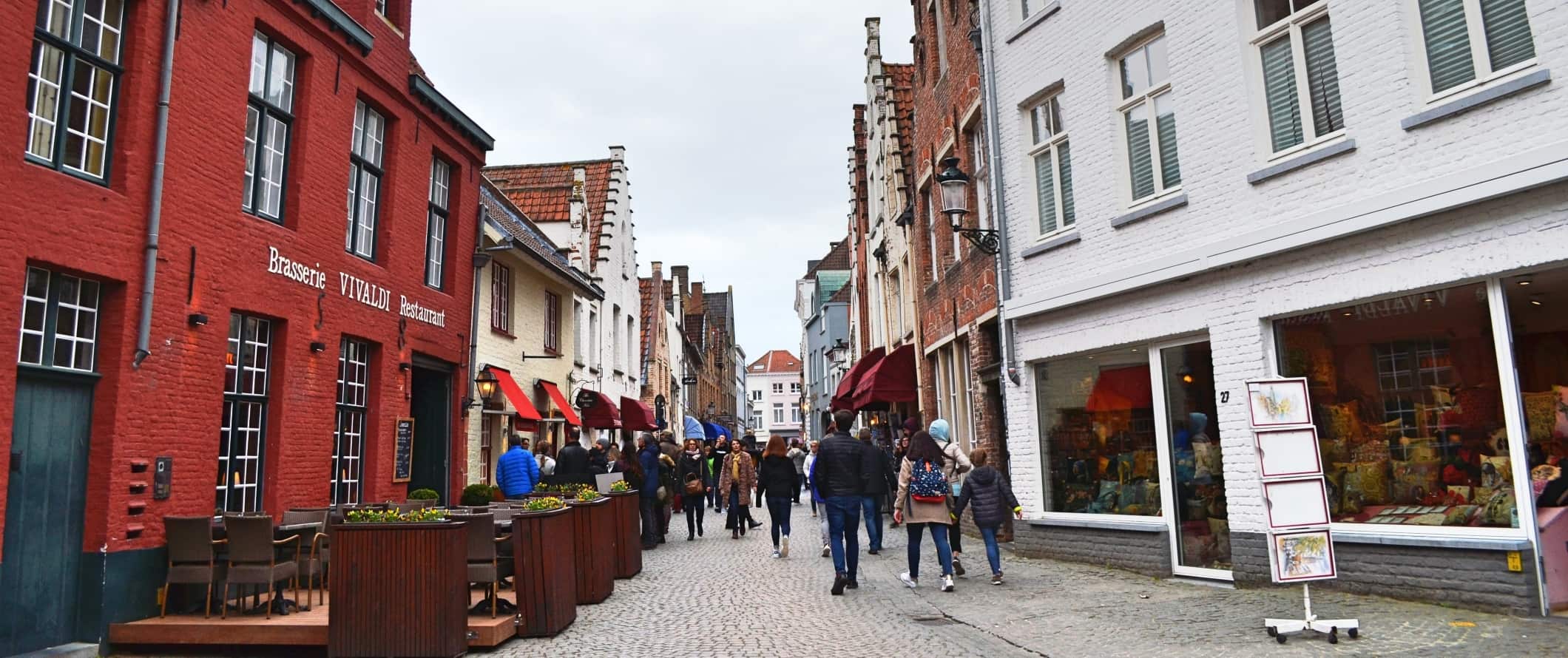
Hostel prices – Dorms with 6-8 beds cost 25-30 EUR per night.. A private room for two with a private bathroom starts around 75-100 EUR. Free Wi-Fi is standard though most hostels don’t offer free breakfast or self-catering facilities. Expect hostel prices to double in the summer.
For those traveling with a tent, camping is available outside the city. A basic plot for two without electricity starts around 20 EUR per night.
Budget hotel prices – Budget two-star hotels start at 75-100 EUR per night. However, there are more options with three-star hotels, which cost between 110-175 EUR per night. Expect basic amenities like free Wi-Fi, TV, and coffee/tea makers.
Airbnb is available here as well, with private rooms starting around 65 EUR per night. You can find whole apartments for around 120 EUR per night. Be sure to book early otherwise prices can double and spots are hard to find.
Average cost of food – Belgian cuisine has been strongly influenced by its European neighbors over the centuries, specifically France, Germany, and the Netherlands. Food here is hearty with chocolate, waffles, fries, and beer being the most iconic cultural staples. Steak and fries, mussels (often with fries), smoked ham, stew, and sausages are just some of the common dishes you’ll find here. Portions are large and filling too (the saying goes that Belgian food takes the portions of German cuisine but adds the quality and delicacy of French cuisine).
Casual meals at cafes cost around 10-20 EUR while fast food (think McDonald’s) costs 8 EUR for a combo meal. Takeaway shops are everywhere, at which you can get a filling cone of fries for 3-5 EUR or a waffle for 3-6 EUR. Pizza is around 15-19 EUR while Chinese food is 16-19 EUR.
A main dish at a casual eatery, especially in the town square, costs around 25-30 EUR (if not more). If you want to splash out on a three-course meal, expect to pay at least 60-75 EUR.
Beer is 3-5 EUR, a glass of wine is 4-5 EUR, and a cocktail is 10-12 EUR. A latte or cappuccino is around 3-4 EUR while a bottle of water is 2 EUR.
If you want to cook your meals, there are some great markets throughout the city. Expect to pay around 40-60 EUR for a week’s worth of groceries.
Backpacking Bruges Suggested Budgets
If you’re backpacking Bruges, expect to spend around 65 EUR per day. This budget covers a hostel dorm, cooking your meals, taking public transportation and walking everywhere, limiting your drinking, and doing most free activities like free walking tours and visiting the markets.
On a mid-range budget of 170 EUR per day, you can stay in your own room, enjoy a few drinks, eat out most meals, take the occasional taxi to get around, rent a bike, and do more paid activities like visiting museums and taking a canal cruise.
On an upscale budget of 300 EUR or more per day, you can do whatever you want. The sky is the limit here.
You can use the chart below to get an idea of how much you need to budget daily. Keep in mind these are daily averages – some days you’ll spend more, some days you’ll spend less (you might spend less every day). We just want to give you a general idea of how to make your budget. Prices are in EUR.
Bruges Travel Guide: Money-Saving Tips
Bruges, a city that seems designed for older travelers and couples, is not a cheap place to visit on a budget. If you want to save money, here are some suggestions to help you get started:
- Walk everywhere – Walking is the best way to see and get around the city. Most of the city’s main attractions are within 15 minutes of each other. There’s really no reason to take a bus or taxi. Save a few euros and walk everywhere.
- Take a free walking tour – Free walking tours are the best way to get the lay of the land, see the main sights, and connect with a local guide who can share their insider tips. Just be sure to tip at the end!
- Get the Musea Brugge Card – This handy little card entitles you to free entry to 27 museums and attractions in Bruges as well as cruises on the canal. You can also get 25% off a variety of concerts, dance and theater performances, and bike rentals. If you are going to do many of the things listed on the card, this pass will save you money!
- Visit the farmer’s market – On a Wednesday morning, the Grote Markt Square is taken over by a market that offers cheaper food and drinks than what you’ll usually find. Restaurants are expensive, so loading up on fresh food at the market will cut down your food expenses.
- Stay with a local – Hospitality networks like Couchsurfing connect you with locals who can give you a free place to share and share their insider tips and advice. It’s the best way to save money and have a more local experience.
- Bring a water bottle – The tap water here is safe to drink so bring a reusable water bottle to save money and reduce your plastic use. LifeStraw is my go-to brand as their bottles have built-in filters to ensure your water is always clean and safe.
Where to Stay in Bruges
There are only a few hostels in Bruges and limited choices for budget accommodation. Here are my recommended places to stay:
- Snuffel Hostel
- St. Christopher’s Inn Bauhaus Hostel
- Lybeer Travellers’ Hostel
- Cornerhouse Level Ten
- Hotel Van Eyck
How to Get Around Bruges
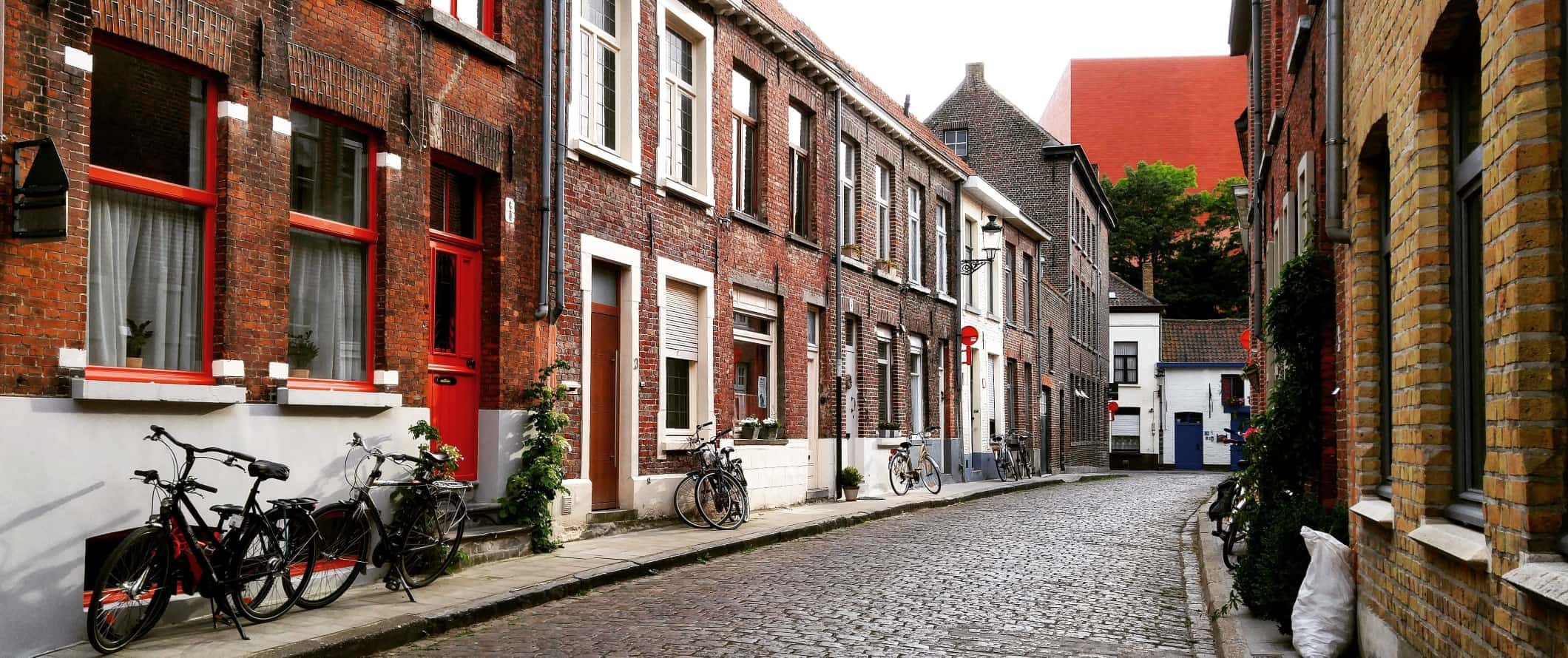
Public transportation – The local bus is operated by De Lijn. Single tickets cost 2.50 EUR and are valid for one hour. If you plan on using the bus a few times throughout the day, a day pass costs 7.50 EUR.
Bicycle – Renting a bicycle is a great way to get around town since it’s compact. Hourly rates start at 4 EUR, while full-day rentals start from 13 EUR. There are a handful of bike rental shops, including Fietspunt Station and Ben’s Bike Bruges where you can rent a city bike and even an e-bike.
Taxi – Taxis are expensive here. The base rate is 23 EUR, then it’s an additional 2.70 EUR per kilometer. Skip them if you can as they will destroy your budget. The city is small too so you really shouldn’t need one.
There are no ridesharing services like Uber here.
When to Go to Bruges
Summer is the best time to visit Bruges. This is when the weather is nicest and the city is in bloom. The average temperature in August is 20°C (68°F), and it rarely gets much hotter than that. Since Bruges is on the coast and has a maritime climate, summers are mild and winters are cold and windy.
Spring and fall are the shoulder seasons, with cooler temperatures and fewer visitors. In April and May, temperatures are under 10°C (40s and 50s°F). Temperatures in the fall range from 8-12°C (47-54°F), and it gets rainy around this time, too. If you don’t want to deal with the summer crowds, this is a good time to visit. Just pack a raincoat and sweater.
Most people avoid visiting in the winter as the temperatures drop to near freezing. But if you want this magical city all to yourself, especially when there are Christmas markets, Bruges is worth a wintry visit!
How to Stay Safe in Bruges
Bruges is very safe to visit. Violent crime is incredibly rare here so travelers should feel safe. However, since it is a touristy city, pickpocketing and petty theft can occur. Always keep your valuables secure and out of reach when out and about, especially in crowds and on public transportation.
Solo female travelers should feel safe here for all those reasons. However, the standard precautions you take anywhere apply here too (never leave your drink unattended at the bar, never walk home alone intoxicated, etc.). There are numerous solo female travel blogs that can provide more specific tips.
Scams here are rare, however, if you’re worried about getting ripped off you can read about common travel scams to avoid here.
If you experience an emergency, dial 112 for assistance.
Always trust your gut instinct. Make copies of your personal documents, including your passport and ID.
The most important piece of advice I can offer is to purchase good travel insurance. Travel insurance will protect you against illness, injury, theft, and cancellations. It’s comprehensive protection in case anything goes wrong. I never go on a trip without it as I’ve had to use it many times in the past. You can use the widget below to find the policy right for you:
Bruges Travel Guide: The Best Booking Resources
These are my favorite companies to use when I travel. They consistently have the best deals, offer world-class customer service and great value, and overall, are better than their competitors. They are the companies I use the most and are always the starting point in my search for travel deals.
- Skyscanner – Skyscanner is my favorite flight search engine. They search small websites and budget airlines that larger search sites tend to miss. They are hands down the number one place to start.
- Hostelworld – This is the best hostel accommodation site out there with the largest inventory, best search interface, and widest availability.
- Booking.com – The best all around booking site that constantly provides the cheapest and lowest rates. They have the widest selection of budget accommodation. In all my tests, they’ve always had the cheapest rates out of all the booking websites.
- Get Your Guide – Get Your Guide is a huge online marketplace for tours and excursions. They have tons of tour options available in cities all around the world, including everything from cooking classes, walking tours, street art lessons, and more!
- SafetyWing – Safety Wing offers convenient and affordable plans tailored to digital nomads and long-term travelers. They have cheap monthly plans, great customer service, and an easy-to-use claims process that makes it perfect for those on the road.
- LifeStraw – My go-to company for reusable water bottles with built-in filters so you can ensure your drinking water is always clean and safe.
- Unbound Merino – They make lightweight, durable, easy-to-clean travel clothing.
- Top Travel Credit Cards – Points are the best way to cut down travel expenses. Here’s my favorite point earning credit cards so you can get free travel!
- BlaBlaCar – BlaBlaCar is a ridesharing website that lets you share rides with vetted local drivers by pitching in for gas. You simply request a seat, they approve, and off you go! It’s a cheaper and more interesting way to travel than by bus or train!
Bruges Travel Guide: Related Articles
Want more info? Check out all the articles I’ve written on backpacking/traveling Belgium and continue planning your trip:
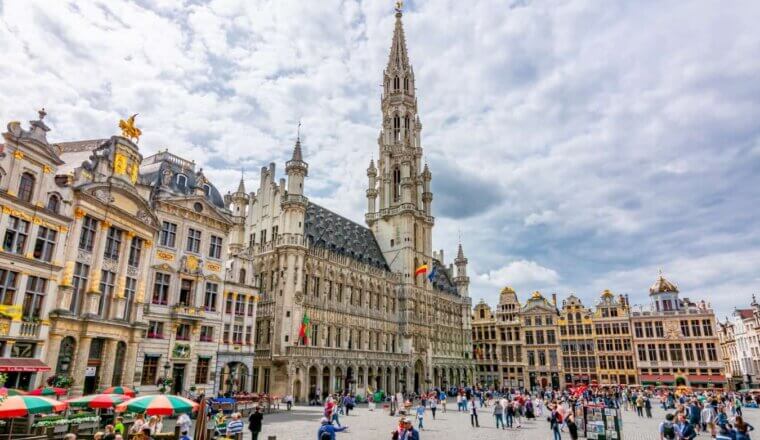
The Best Things to Do and See in Brussels
Get my best stuff sent straight to you, pin it on pinterest.
- Where To Stay
- Transportation
- Booking Resources
- Related Blogs
Bruges Travel Guide | Why You MUST Visit in 2024

Even though we only live a 2.5 hour drive away from Bruges, we had never visited this beautiful city before. Bruges is a feast for the eyes and the mouth. There is so much to see, you won’t even get time to put your camera away. Plus, with over 60 chocolate stores, Bruges is a true chocolate city. Let us help you plan your next Bruges citytrip. We tell you everything you need to know before visiting Bruges.
This Bruges Travel Guide is written by Traveltomtom team member Ashley .
Bruges is one of the most beautiful places to visit in Belgium, also known as the Venice of the North. Back in the days it was one of the richest and biggest towns in Northern Europe, and over the decades it managed to preserve its rich history and charm.

Bruges is a beautiful medieval, fairytale and picturesque place to visit in the North of Belgium, in the province of Flanders.

It’s the capital and the largest city of the province of West Flanders. The historic city center is a prominent UNESCO World Heritage Site, which makes Bruges a popular tourism destination in Belgium. Eight to nine million tourists travel to Bruges every year.
It feels like you step back in time when visiting Bruges. The medieval city center, cobble stones streets and old buildings have a lot to do with that. The horse carriages that take tourists to the highlights of Bruges really add to that medieval feeling.
Stay connected when traveling to Belgium and get yourself a local prepaid sim card or an e-sim card for Belgium to safe on high roaming costs! Check out my article for the best way to get connected when traveling to Belgium in 2024.
UNESCO World Heritage

In 1998 the Beguinage was the first site to be recognized as a World Heritage Site in Bruges. One year later the Belfry was added to the World Heritage list. The entire historical city center followed in 2000.
Large parts of the medieval heritage remained practically intact. That alone was reason enough for UNESCO to designate the entire city center as World Heritage Site.
Something that played a big part in the recognition of UNESCO is the fact that Bruges is the birthplace of the Flemish primitives. Nowadays the world-renowned works of Jan van Eyck, Hans Memling and other prominent Flemish Masters can be admired at the several museums throughout the city.
How to get to Bruges
Bruges has a pretty easy to reach location, as it is located fairly close to a few airports but also to the coast and the Zeebrugge harbor.
Bruges is easily accessible by car, as it is located close to the E40 highway, which runs right through Belgium from West to East. Bruges has several car parks just outside the city center, where you can leave your car. Our recommendation is to park at the P&R Station. It only costs €5,50 per day to park your car here. And it’s located right next to the bus station too, so you can easily catch your ride to the center of Bruges.
When you travel to Bruges by plane, both Brussels Airport and Brussels Charleroi Airport are an option. From Brussels Zaventem Airport you can easily travel onwards to Bruges by train. There is a direct hourly train service from the airport to Bruges.
Related: Buying a Sim Card for Belgium at Brussels Airport in 2024 !
Another popular regional airport is Brussels South Charleroi Airport. From here, bus company Filbco offers direct shuttle bus services to and from the station of Bruges, with a frequency of 9 trips a day.
Bruges has a large train station, and daily direct services between Bruges, Antwerp, Ghent, Hasselt, Leuven and Brussels that runs every hour. Bruges is very well connected by train.
International Coach services
There are various coach companies that operate bus services to Bruges from the main international transport hubs and from cities abroad.
With all travel options mentioned above, the central station is involved, either for parking your car or for travelling to Bruges by train or bus. From the Central Station there is a free shuttle service running every day between 7.20AM and 7.00PM. This shuttle runs every 20 minutes according to a fixed timetable. The shuttle has several stops in the city center and is a great way of getting around.
Triënnale Bruges

Triënnale Bruges brings contemporary art and architecture to the historic core of the city of Bruges every three years in a unique setting as a UNESCO World Heritage Site. It’s an excellent opportunity to extend a visit to Bruges with this art and architecture exhibition.
In October 2021, Bruges was the setting for the Triënnale. Thirteen national and international artists and architects presented their art installations to the general public. The theme of the 2021 Triënnale was TraumA. Using artistic and architectural interventions, TraumA brought out the less attractive aspects and allowed them to become part of the image of the city. TraumA balanced between the present and the hidden. With a trail of sculptural, architectural and organic creations, it met a celebration of the versatility and mobility of the city. Between private and public. Between dream and nightmare.

Throughout the city there were 13 art objects to be found and all of them had their own story to tell. You could explore them yourself by downloading the map from the Triënnale website . It showed you the location of all 13 objects. An amazing free thing to do in Bruges.
There were also daily guided walks from the market square every day at 2.00 pm for about 2 hours, and take about two hours and the costs of these walks were €12,50 per person.
The Triënnale Bruges will be back again in 2024 and then theme will be focussing on the future. Let's see what the Triënnale will bring to Bruges in 2024, but surely it will be another reason to travel to Bruges.
you may also like...

Bruges from the heart city walk

There’s no better way than to explore a city by foot. Just start walking and get lost is always our way to discover a city.
Want to get to know Bruges while walking through the city and discovering some hidden gems and secret places? Then the Bruges from the heart city walk is definitely your thing. We decided to join one of their exclusive guided walks, where a local city guide will take you along a fascinating trail. It includes all of Bruges must-see heritage and architectural highlights.

The guided walk takes about two hours and starts at the Market Square where you will meet your guide. After two hours it ends on the rooftop of the Concert Hall where you can enjoy amazing panoramic views of Bruges after you saw the best places to see in Bruges.

The Bruges from the heart city walk can be done every Wednesday, Saturday and Sunday and will cost you €12,50 per person. It’s the money well worth spending as you get a lot of insight information on Bruges and it will show you everything you came to Bruges for!
Places to visit in Bruges
There is so much to see in Bruges with its medieval character and the many old buildings in the city. It’s definitely the place to be if you’re into history, but let’s not forget the art. You can indulge yourself in history, art and architecture in Bruges, you’ll run out of time if you want to see and do it all. Here are some cool places to visit.
Groeninge Museum

The Groeninge Museum is your place to be when you’re into art! This museum offers a varied overview of the history of Belgian visual art, six centuries of Belgian art in one location, with work by Flemish primitives such as Jan van Eyck, Hans Memling and Gerard David. Work by masters who came from the Low Countries and often worked in Bruges and completed assignments there in the late 15th and early 16th centuries. The collection of the Groeninge Museum is one of the most beautiful collections in the world, containing many landmark works from the history of European art.
Gruuthuse Museum

The Gruuthuse Museum displays 500 years of Bruges history in historic objects. What once was the city palace of the lords of Gruuthuse is now an absolute highlight of Bruges! Walking through the museum you will go through three crucial periods in the rich history of Bruges. First you get the time of the Burgundian prosperity, then the less well known 17th and 18th centuries and lastly the historical reinvention of Bruges in the 19th century.
The museum makes these three periods come to life in over 600 collection items which all tell their own story.
Saint John’s Hospital

Saint John’s Hospital is one of the oldest preserved hospitals in Europe, dating back to the mid-12th century. You can visit the medieval wards, the church and the chapel, as well as the impressive collection of archives, art works, medical instruments and seven works of arts by Hans Memling. The oak wood rafter on the Diksmuide attic above the hospital ward is one of the oldest and most monumental in Europe. Make sure you also visit the hospital pharmacy with authentic interior from the middle of the 17th century.
You want to know all about the history of Bruges? Go back in time and experience the bustling city of Bruges in the Golden Age. The Historium Story features the exciting tale of Jan van Eyck’s apprentice. In the Historium Virtual Reality you can take an impressive virtual flight past the 15th century architecture, including the Water Halls. At the second floor of the building you’ll find the panoramic terrace with beautiful views of the Market Square. For some real impressive views you can climb the Historium Tower for unique 360° views.

Nowadays the Beguinage is inhabited by the Sisters of the Order of Saint Benedict and several Bruges women who have decided to remain unmarried. The Princely Beguinage Ten Wijngaarde with its white colored house fronts and tranquil convent garden was founded in 1245. It has to be on top of your list when visiting Bruges. It’s a soothing, quiet and nice environment. And, the Beguinage hosts one of the 13 Triënnale pieces.
Best photo spots in Bruges
Make sure you bring your camera when visiting Bruges, because once you start exploring the cobbled stone streets, winding canals and hidden alleys, you’ll discover one amazing photo spot after the other. You won’t even get time to put away your camera as the city is literally full of photogenic places.
Quay of the Rosary

By far the most popular photography spot in Bruges, a centuries old Instagrammable hotspot. Back in the days rosaries were sold here, today it offers one of the city’s loveliest views. It is called The Bruges Postcard View, and believe me, you won’t stop taking photos.
It’s the perfect shot with medieval buildings, the canals, the boats and the Belfry as the perfect backdrop. Make sure to visit this place by day and by night as it is worth photographing this place all times of the day.
Dumon Chocolate shop

The story of Chocolatier Dumon starts back in 1992, just outside of Bruges. Nowadays they have seven stores in three countries, most of them in Belgium and three of them in Bruges. Their shop at Eiermarkt is a fairytale shop and invites you to come in and have a look, or taste. The building is completely different from the buildings right next to it, but that makes Dumon stand out from the rest.
Boniface Bridge

When visiting the Boniface Bridge you wouldn’t tell that this is one of the youngest bridges in Bruges. In fact, during our guided walk through Bruges we were asked how old we thought the bridge was. We were all way off with our answers. It is actually one of my favorite places in Bruges, as it is tucked away a bit, yet still a very busy and popular place. Its picture perfect from both sides of the bridge. From one end you get the little canal and the overhanging half-timbered houses, but from the other side you get the impressive and stately Church of Our Lady in your backdrop. Perfect either way!
Bruges canals

Wherever you walk in Bruges, there is no escaping the many canals. One is even more photogenic than the other. The Boniface Bridge we mentioned before is a great way to start if you want to capture the canals.
Market Square

It’s the beating heart of the city, with the Belfry at one end of the square and a row of colorful stepped gables at the other end. In between it’s a coming and going of people all day long. Check out the imposing Provincial Court or hop on for a carriage ride. The Market Square is the place where the coachmen wait, another picture perfect!
Belfry of Bruges

It’s the landmark of Bruges, the most striking tower in Bruges dates back to the 13th century. It’s 83 meters high and is protected as a world heritage site. You can climb the Belfry, all 366 steps, and if you do, you’ll be rewarded with a stunning view over the city.
It provides the perfect picture from every angle of the Market Square, or from the Quay of the Rosary. Want to climb the Belfry? Costs are €14,00 per person.
Burg Square
Ask someone from Bruges, and they will tell you that the Market Square is the heart of Bruges, but the Burg Square is the soul! For centuries this square has been the center of power in the city, and the 14th century gothic building still serves as town hall. The buildings in the square represent a variety of architectural styles. The Gothic Town Hall is probably the most beautiful building in Bruges.
It’s at this square where another Triënnale object can be found, with the Town Hall as perfect backdrop.
Fun things to do in Bruges
When you think of Bruges and Belgium, it’s often the classic Belgian beer, fries and chocolates that come to mind by many people. And don’t worry, there are many classics in Bruges, that’s why we’re listing our favorite Bruges classics right here.
Brewery ‘De Halve Maan’ – world’s first beer pipeline

It’s the worlds first brewery to have established a beer pipeline. Due to growth and logistical challenges in the center of Bruges, a unique underground beer pipeline, 3 km long, was laid from the brewery to the bottling plant in the suburbs.
This authentic brewery in the center of Bruges is a family-run business with a long lasting tradition dating back six generations to 1856. It’s the place where the Bruges city beer, Brugse Zot, is brewed. There are daily tours at the brewery, and best part, at the end of the tour you’re offered a free glass of Brugse Zot blond beer.
Bruges Beer Experience

After having visited the brewery you might as well be interested in the Bruges Beer Experience. Discover everything you ever wanted to know about the ingredients of beer, the brewing process, food pairing, beers in Bruges, trappist and abbey beers, all in a very interactive way. This tour will make you want to sample some beers for sure. The bar offers 16 different kinds of beer and is open to everyone. Being located at the Market Square it has some great views too!
Choco Story – Chocolate Museum

Get to know everything about the history of cocoa and chocolate. Walking through this museum you’ll walk through 4000 years of chocolate history. At the end of the tour you will get to the demonstration center, and believe me, it’s the best part of the museum. They demonstrate how to make chocolates here, when we visited they demonstrated how pralines are made. At the end of the demonstration you get a sample bag with several pieces of chocolate, delicious!
Fries Museum
It’s quite a small museum actually, but when visiting the country that’s famous for its fries, you have to visit the Fries Museum when visiting Bruges! The museum tells the history of the potato, Belgian Fries and the various sauces and dressings that go well with the most delicious and famous Belgian comestibles.
In the basement you will find an actual fries shop where you can get a discount by showing your entrance ticket.
If you want to visit both the Fries Museum and Choco Story, make sure to buy a combined ticket for the two of them, and save some money.
Fries for lunch

Talking about fries, eating real Belgian fries is of course a must do and should not be skipped! Throughout Bruges there are many shops where you can get your fries, so pick one and enjoy them!
Buy Belgian chocolates
Belgium is proud of their chocolate, and rightly so! Belgium is the third largest exporter of chocolate and Bruges can also call itself a real chocolate city with more than 60 chocolate shops. Plenty of choice to bring some delicious chocolate, pralines or bonbons.
Bruges by boat

Last, but certainly not least, have you really visited Bruges if you haven’t seen it from the water? A visit to Bruges isn’t really complete without a boat trip on the Bruges canals. Discover the city from a surprising and different perspective. There are five boarding locations where you can embark one of the boats. The tour takes about half an hour and the captain will take you on a tour of the most beautiful spots on the water. These boat trips run from early March to mid-November. Tickets are €10,00 per person.
Traveltomtom’s recommendations
We’ve spent two days in Bruges, which is a good amount of time to explore the city. If you want to visit all museums you might need a bit longer, as those visits can take a lot of time. To make your visit easy and fun we have come up with a shortlist of Traveltomtom’s top recommendations for Bruges. Use it to your advantage.
Quatre Vins

Our number one recommendation, restaurant Quatre Vins. No classic menu, no starters or mains, nothing like anywhere else! All dishes are to share, for diner they recommend 5-6 dishes for a normal meal. They determine the order in which the dishes are served. So even though you know what you ordered, every dish is a surprise. A very relaxed atmosphere, amazing dishes that are a work of art on your plate, and an amazing location just off the Market Square. Just for this restaurant I would go back to Bruges!
Tom’s Diner

We wouldn’t be Traveltomtom if we didn’t recommend this one, Tom’s Diner. A modern and hip hotspot on the edge of the center of Bruges for more than 22 years. No-nonsense cuisine with a touch of rock ‘n roll. A great setting in a historical building. Our recommendation would be their wide choice of tasty and original tapas.
Hotel Marcel
Location is key when searching for accommodation. And location-wise you can’t go much better than Hotel Marcel in Bruges. Located just 150 meters from the Market, so right in the middle of it all. Hotel Marcel offers authentic hospitality and Bruges coziness in a modern jacket. Breakfast is included and basic but very good. Freshly baked bread, croissants and chocolate croissants, juices and fresh fruits, and best of all soft boiled eggs brought right to your table. A unique hotel in Bruges, well priced and top location.
Concert Hall Circuit

Totally unexpectedly one of the nicest things to do in Bruges, and therefore it made it to this shortlist. Discover the Concert Hall, it’s art and architecture during a surprise-filled visitors trail. It’s a playful discovery trail with lots to see and do for all ages. You go behind the scenes of the famous Concert Hall, get to see their music venues and also get to make some music yourself.

Be in for a surprisingly fun and interesting tour, which eventually ends on the rooftop of the building with a lovely view over the city.
Get lost in the streets of Bruges, just start walking, exploring and discovering, you’ll be amazed and want to keep going to see if there’s more to come, and yes there is! Bruges stimulates all your senses, be in for an experience like no other.

A thank you is in order here for Visit Bruges and Flanders Tourism for inviting Traveltomtom team member Ashely to Bruges and organizing this Bruges trip down to the last detail.

This blog was written by travel writer and Traveltomtom team member Ashley . She was invited to visit Bruges on behalf of Traveltomtom, and wrote this blog about her adventures in the city of Bruges.
Enjoy your trip to Bruges!
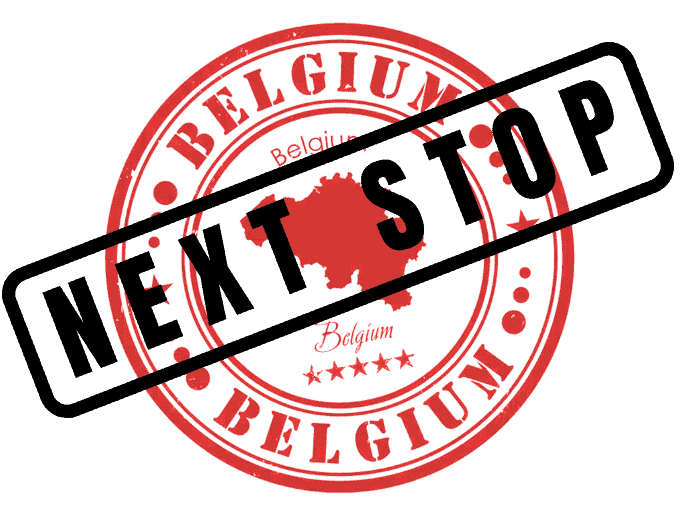
8 Best Free Walking Tours in Bruges with Local Guides (2024)
This article may contain affiliate links. This means we receive a small commission whenever you book or purchase something through our links (at no extra cost to you!). You can find more information in our disclaimer .
Looking for the best free walking tours in Bruges?
Growing up near this historic city, I’ve spent many days exploring the streets of the so-called “Venice of the North”.
In this guide, I’ll introduce you to the nine top free walking tours that showcase Bruges in a way only a local can appreciate. These tours aren’t just about seeing the sights; they’re about experiencing the real Bruges, its history, and its culture.
This article may contain affiliate links. This means we receive a small commission whenever you book or purchase something through our links (at no extra cost to you!). You can find more information in our disclaimer.

TOP PICK | My favourite is the Tell Me About Bruges Tour in which a local storyteller uses stories to guide you through the city. Reserve your spot here .
The best free walking tours in Bruges
free walking tours in Bruges
1. Tell Me About Bruges ⭐ 1000 Years of Stories by Local Storytellers

Babs Rodrigus is a travel addict at heart and loves to explore her home country Belgium and the rest of the world – preferably with her wife and kids. She’s all about showing you the most mesmerising spots in this tiny European country and making you see how great it truly is.
When she’s not travelling, Babs loves to read, write, eat chocolate (hey, Belgian remember) and sing Frozen songs with her daughter.
Leave a Reply Cancel reply
Your email address will not be published. Required fields are marked *
Save my name, email, and website in this browser for the next time I comment.
- Shop Fullwidth
- Shop Sidebar
- Single Product With Sidebar

What do you want to see in Bruges?
Bruges popular tours, bruges tours, best value trips.

Bruges Winter Wonderland
Winter Glow will be taking place throughout the city from 25 November 2022 until 08 January 2023 As every year, Bruges again welcomes you to a beautiful winter experience: Winter Glow. A winter festival packed with …

Bruges Medieval Architecture Tour
City Tours, Urban

Bruges Photo Session Like A Pro
City Tours, Iconic
Why Choose Us

We are locals
We know Bruges inside out. You will experience it in an extraordinary way. This will be once in a lifetime experience.

World Class Service
We understand what you want: Quality, and we will ensure it.

Best Price Guarantee
Exclusively on our website, you get 20% off on each purchase.
Articles & Tips

Bruges Must-visit 5 Outstanding Architectural Destinations

10 Reasons for Bruges to Top Your Bucket List

Bruges Top 5 Tips and Tricks for how to book Ideal Accommodation

TOURS & ACTIVITIES IN BRU GES
Best of Bruges: History, Chocolate & Beer Tour
In english , €49 (€15 for kids).
History, chocolate & beer! | 3 hours | €49 | Book now
All the best Bruges has to offer in one complete package: History, chocolate & beer!
Meeting point
We meet by the statue in the middle of the main square of Bruges. Look out for the red umbrella!
About the tour
Experience the best of Bruges on this three-in-one walking tour. Meet your guide at the main square for an introduction to the history of Bruges. Next we take you to a top-rated chocolatier, where you’ll learn about Belgian chocolate-making traditions and will try a delicious praline.
We continue on our history-themed walking tour of the city’s UNESCO-listed, medieval center. Finally, we end the tour in the most romantic brewery in town, Bourgogne de Flandres, for a visit and beer tasting.
What's Included
Chocolate demonstration & tasting
Brewery visit & beer tasting
Historical tour of medieval Bruges
Professional guide
Places we visit
Market Square | Belfry | Gruuthuse Palace | St. John's Hospital | Chocolatier Home Sweet Home | Brewery | Smallest Street | Church of Our Lady | Bridge of Love | Dijver | Rosary Quay | Fish Market | Burg Square | Bourgogne de Flandres
Number of participants
The size of the group is limited to a maximum of 24 participants.
Adult (+16 years): €49
Child (5-15 years): €15
Infant (0-4 years): free
Good to know
Also book our evening tour to visit a different part of Bruges and complete your introduction to the city.
See you soon for a legendary time with us in Bruges, Brussels, Ghent & Antwerp!
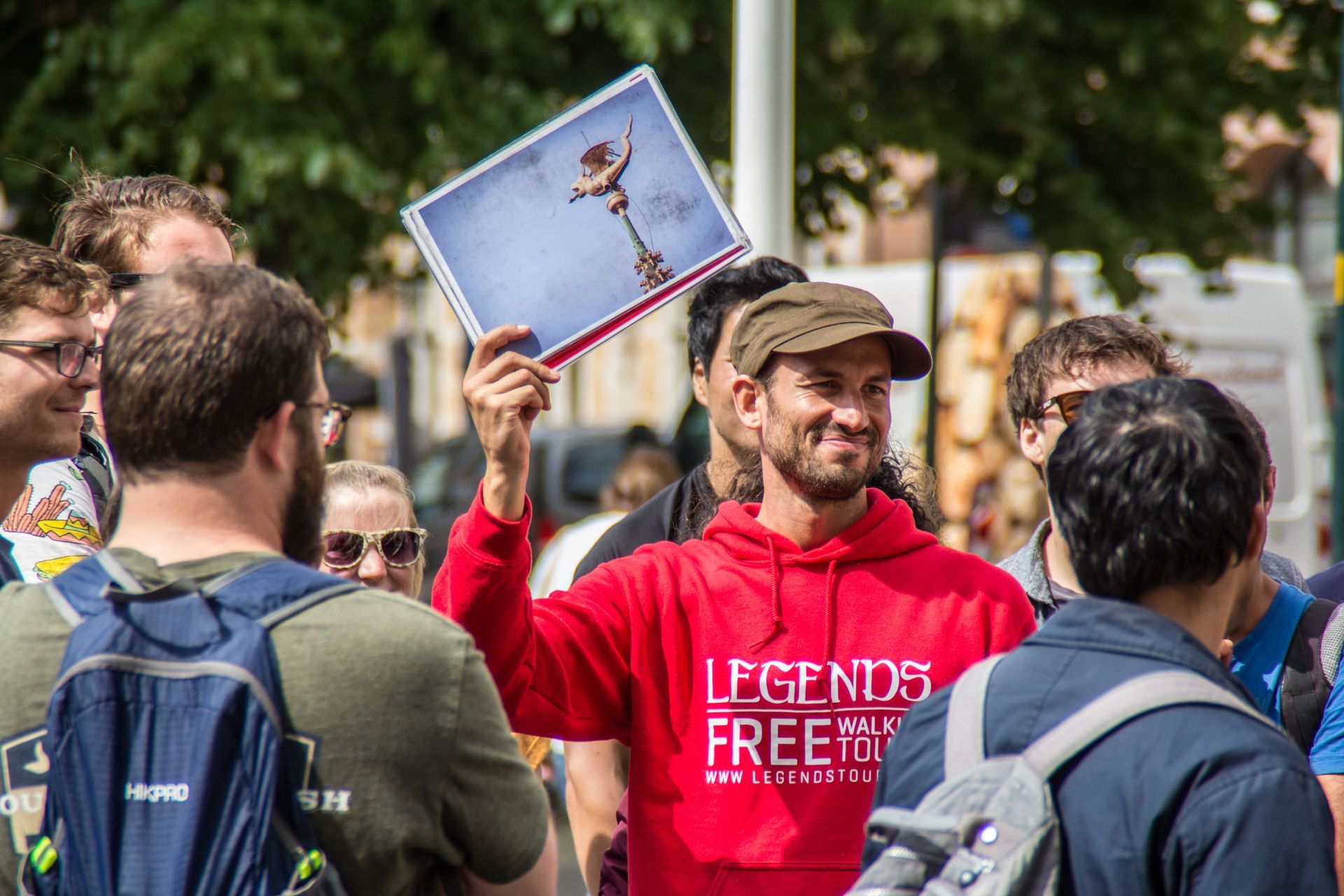
Slide title
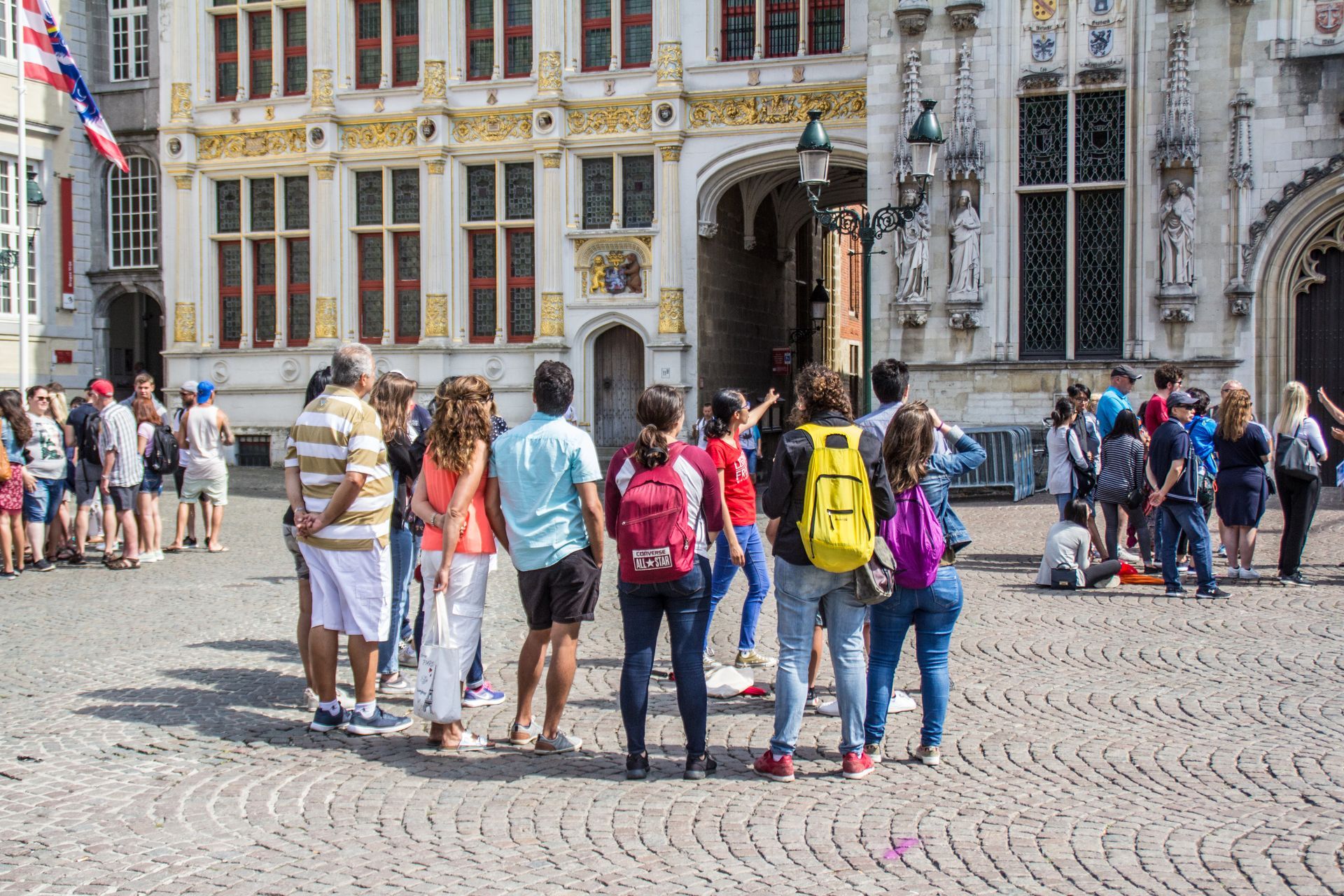
The level of knowledge was impressive. Our guide was also a good story teller, and had a way to include everyone in the group. This is a must if you visit Brugge.
More Guruwalk reviews

Lavigna was friendly and knowledgeable about the history of Bruges, which was really informative. I would highly recommend this company and tour to anyone visiting Bruges!
More TripAdvisor reviews

Absolutely loved this tour! My partner and I were guided by Lavigna and her canine companion.
More Facebook reviews

“The first time I tried this company, I was hooked. Everything was so fabulous and easy. I’ll never go back to anyone else.”
More Google reviews

Tours by legends for legends
Legends vzw - Legends Experiences bv, Sasplein 12, 8000 Brugge
VAT: BE0607.943.144 - BE0800.649.183

IMAGES
VIDEO
COMMENTS
Bruges Triennial. Every three years the Triennial Bruges brings contemporary art and architecture to the historic city centre of Bruges: a unique setting and a UNESCO World Heritage Site. Triennial Bruges will take place from 13 April 2024 through 1 September 2024. Read more.
Table of Contents. Toggle. Bruges: Books you should read. #1 Bruges-La-Morte (Georges Rodenbach) #2 The Square of Revenge (Pieter Aspe) #3 Niccolo Rising (Dorothy Dunnett) #4 In Bruges (Martin McDonagh) #5 The Master of Bruges (Terence Morgan) #6 Hunting in Bruges (E.J.Stevens)
Discover Bruges' timeless beauty and rich history via the expertly written pages of this travel book. Bruges is a truly European masterpiece, from the recognizable Belfry Tower that dominates the skyline to the delicate lacework of the city's canals. Insider Tips and Practical Advice.
With pointy gilded architecture, stay-a-while cafés, vivid time-tunnel art, and dreamy canals dotted with swans, Bruges (Brugge in Dutch) is a heavyweight sightseeing destination, as well as a joy. Where else can you ride a bike along a canal, munch mussels and wash them down with the world's best beer, savor heavenly chocolate, and see Flemish Primitives and a Michelangelo, all within 300 ...
BOOK A BRUGES TOUR. Basilica of the Holy Blood. Nestled in Burg Square, this beautiful church is a haven of peace and tranquility. BOOK A BRUGES TOUR. 20 best things to do in Bruges. From museums and markets to waffles and walks, here are the very best things to do in Bruges, the ultimate fairytale town in Belgium.
Bruges Travel Guide: Basic Tips and Tricks for Making the Most of Your Stay Top Bruges Travel Tips . A common piece of Bruges travel advice is to book in advance if you're visiting in summer - and oh boy, is it true. The city really struggles to deal with the number of tourists it receives, so make sure you snap up some good accommodation ...
Since 1973, Rick Steves has spent about four months a year exploring Europe. His mission: to empower Americans to have European trips that are fun, affordable, and culturally broadening. Rick produces a best-selling guidebook series, a public television series, and a public radio show, and organizes small-group tours that take over 30,000 travelers to Europe annually.
Bruges boats typically run from early March to November and the first boat leaves at 10.00 am. The last boat trips run until 6 pm, which is good to see all the spots during the day and get relatively unobstructed photos. In terms of price, they are as follows: Adults: €12,00. Children (up to 11 years old): €7,00.
In Rick Steves Belgium: Bruges, Brussels, Antwerp & Ghent you'll find in-depth Rick-tested information on all the recommended sights, activities, hotels, and restaurants in each of these four cities, plus self-guided walks and museum tours, background on nightlife and shopping…and plenty of nitty-gritty practical advice:. Bruges. City walk, Groeninge Museum tour, Sint-Janshospitaal Memling ...
An insider guide to 48 hours in Belgium's charming city on water. Little Bruges, the perfect pocket-sized medieval city, was a Sleeping Beauty. Laced with canals, it was one of the great North ...
Book guided tours and excursions. Top 12 sights in Bruges. Travelling to and in Bruges. 0 . en. Nederlands ; Français ; Deutsch ; English ; Español ; Italiano ; Close ... Visit Bruges Walking Tour: Bruges from the heart - VISIT BRUGES. Please note: on 20/04 - 21/04/2024 and 30/05 - 31/05/2024 access to the roof terrace of the Concertgebouw is ...
Book your Bruges boat tour and guided walking tour here in advance. Head to de Halve Maan Brewery. I've left this tour until later in the day as this will allow you to enjoy all of the beer samples on offer without getting so tired that you can't enjoy the rest of this Bruges itinerary. The Halve Maan Brewery is a little touristic, but ...
We are here to show you this incredible UNESCO World Heritage city through the eyes of some of the best local tour guides in Bruges. Wander around, explore the cobblestone streets and gaze at the Gothic architecture. Visit one or more of the many churches and museums. Our storytellers will share their favourites with you.
It is also possible to book a half-day tour from Bruges to Ghent. Old Town of Ghent. Ostend. Shake things up a bit by heading to the coast. Ostend, coupled with the Ostend Harbor and beachfront, is a great day trip if you want to get away from the tourist crowds. In Ostend, you'll find historic landmarks from the Second World War, the Saint ...
St-Salvatorskathedraal. The Burg. The Groeninge Museum. The Hospitaalmuseum and the Memling Collection. The Markt. The obvious place to start an exploration of the city is in the two principal squares: the Markt, overlooked by the mighty belfry, and the Burg,flanked by the city's most impressive architectural ensemble.
Bruges Travel Guide: Money-Saving Tips. Bruges, a city that seems designed for older travelers and couples, is not a cheap place to visit. If you want to save money, here are some suggestions to help you get started: Walk everywhere - Walking is the best way to see and get around the city. Most of the city's main attractions are within 15 ...
This is a small group tour with maximum 15 guests. Likely to sell out. From $47.52 per person. Check availability. Reserve now & pay later to book your spot and pay nothing today. Give this as a gift. Guide 4.8/5. 4.6/5. Derek - United Kingdom March 27, 2024 - Verified booking.
Bruges is easily accessible by car, as it is located close to the E40 highway, which runs right through Belgium from West to East. Bruges has several car parks just outside the city center, where you can leave your car. Our recommendation is to park at the P&R Station. It only costs €5,50 per day to park your car here.
Admire the city on a canal boat trip. Full description. Your guide will meet you at the meeting point. Experience the many charms of the Venice of the North and see why the historic center of Bruges was named a UNESCO World Heritage Site. During the city tour you'll see the Lake of Love, the Begijnhof (founded in 1245), Walplein Square, the ...
free walking tours in Bruges. 1. Tell Me About Bruges ⭐ 1000 Years of Stories by Local Storytellers. Shop for the freshest produce and flowers at Bruges' Market Square. ⭐️ RATING: 4.9 ( 1,268 Reviews) ⌛ TOUR LENGTH: 2 hours and 15 mins💰 CHECK PRICE. " Tell Me About Bruges ⭐ 1000 Years of Stories by Local Storytellers " is a ...
Discover the history of Bruges, Ghent and Antwerp and Brussels! with our expert local guides - Daily free & private tours - Book your walking tour now!
Bruges Winter Wonderland. Winter Glow will be taking place throughout the city from 25 November 2022 until 08 January 2023 As every year, Bruges again welcomes you to a beautiful winter experience: Winter Glow. A winter festival packed with …. 3 Hours.
The size of the group is limited to a maximum of 24 participants. Rates. Adult (+16 years): €49. Child (5-15 years): €15. Infant (0-4 years): free. Good to know. Also book our evening tour to visit a different part of Bruges and complete your introduction to the city. See you soon for a legendary time with us in Bruges, Brussels, Ghent ...